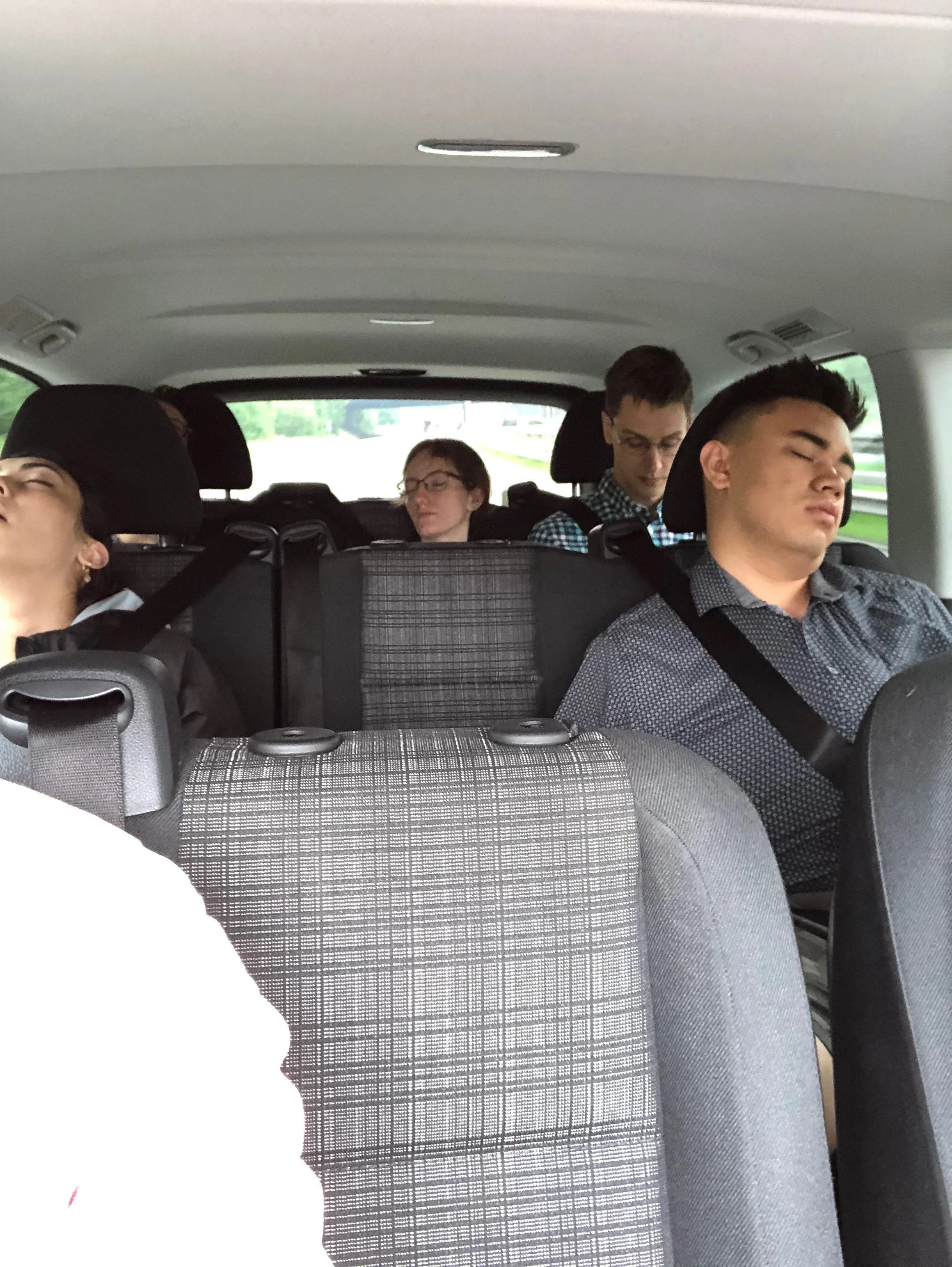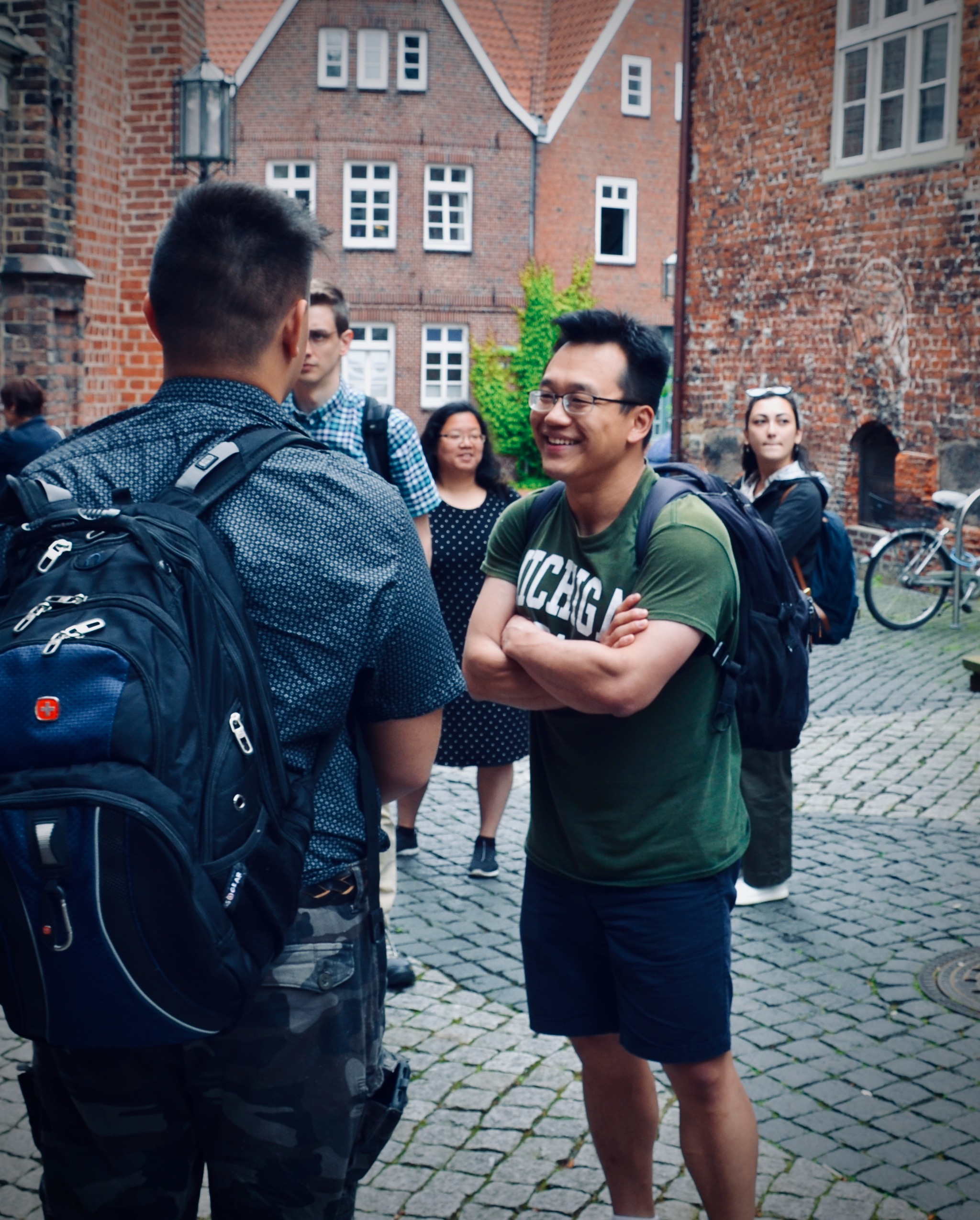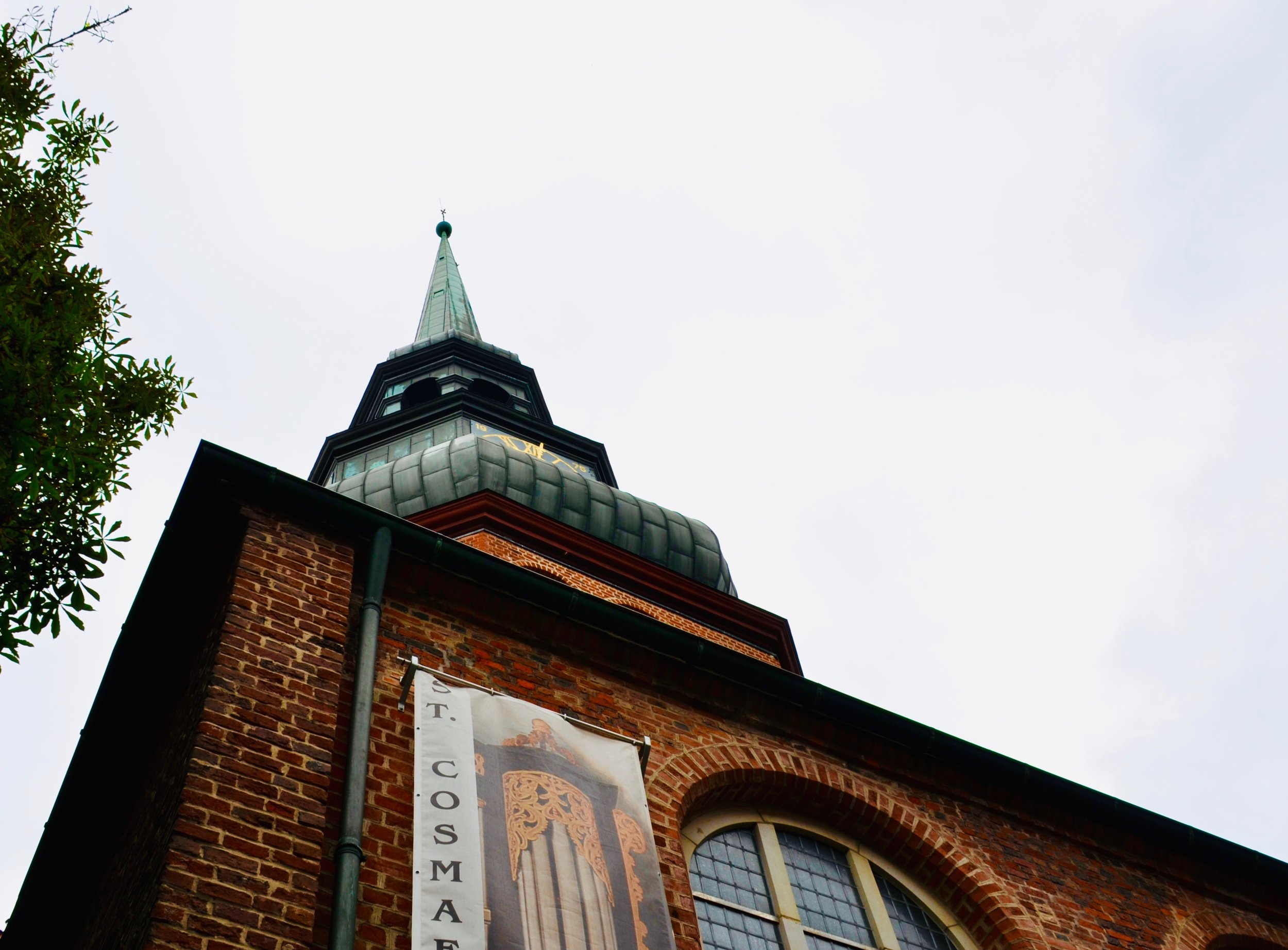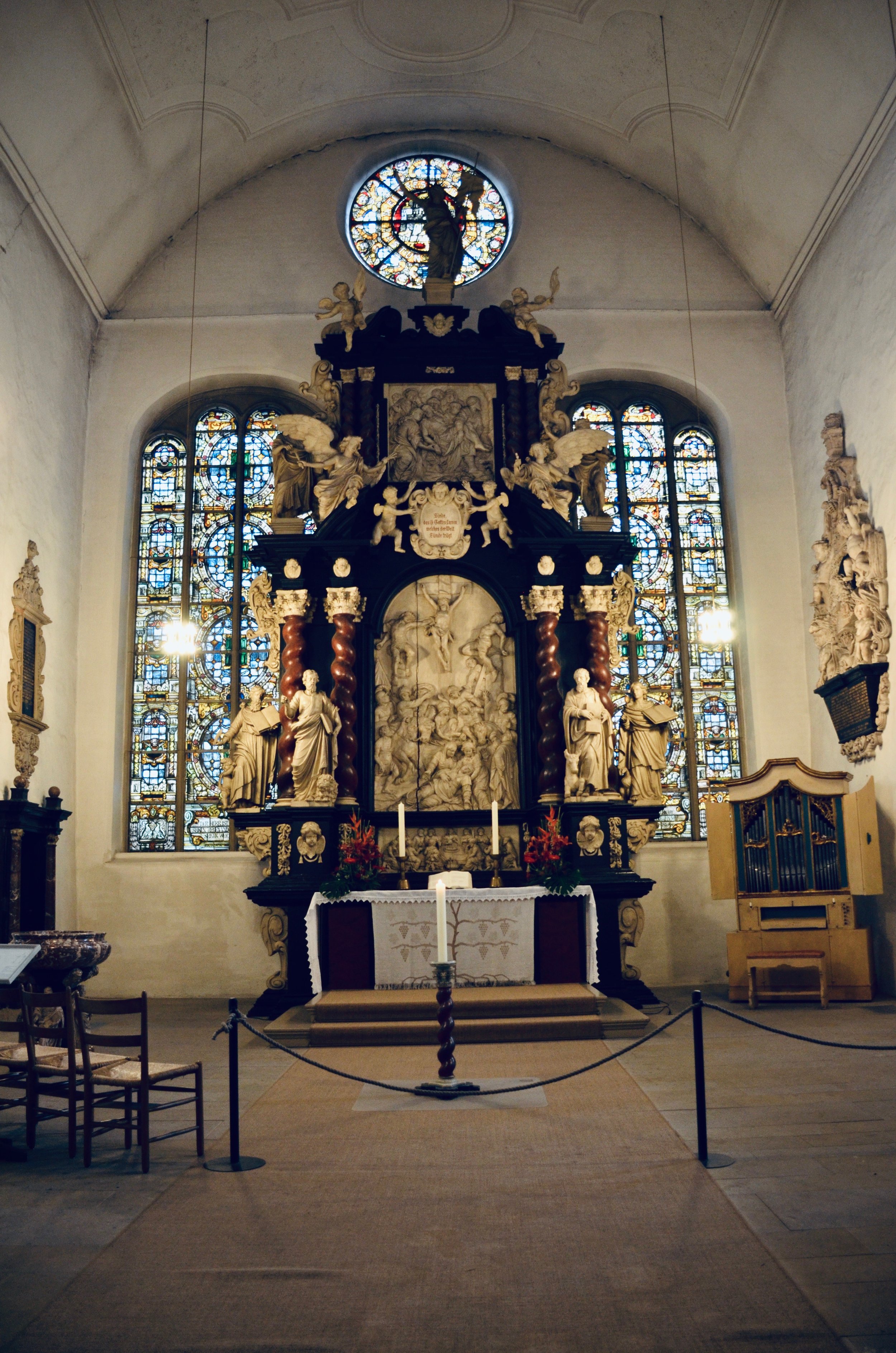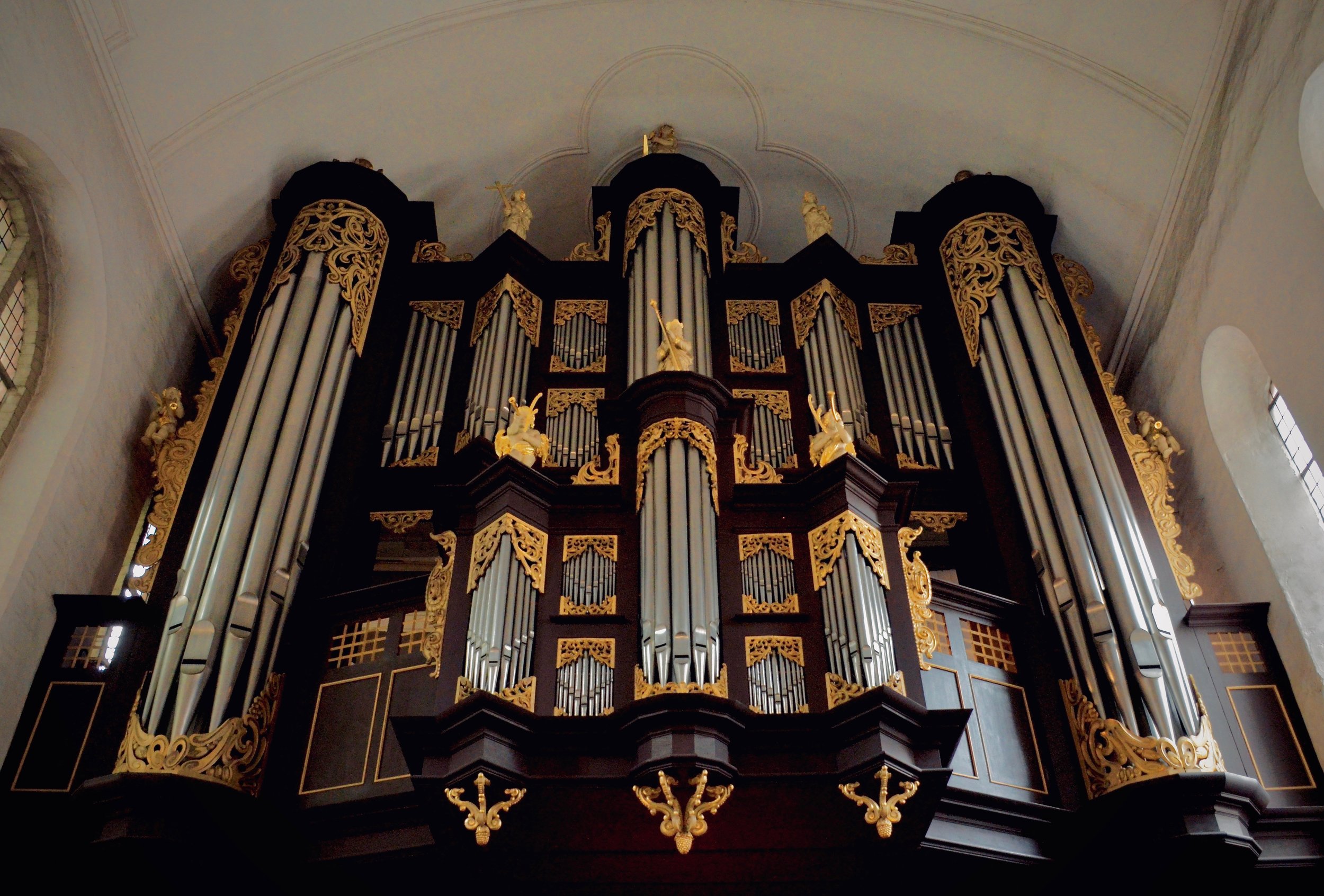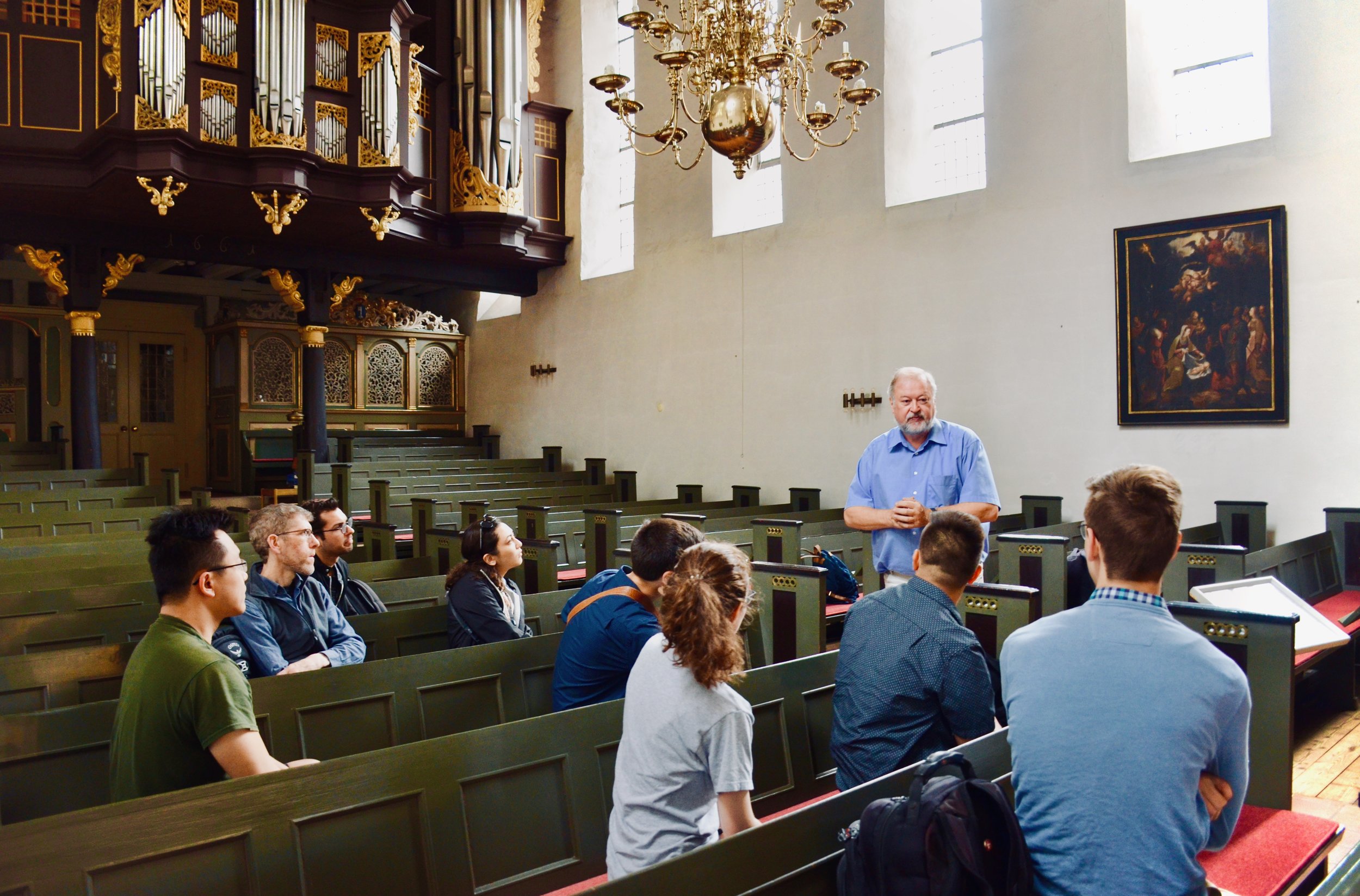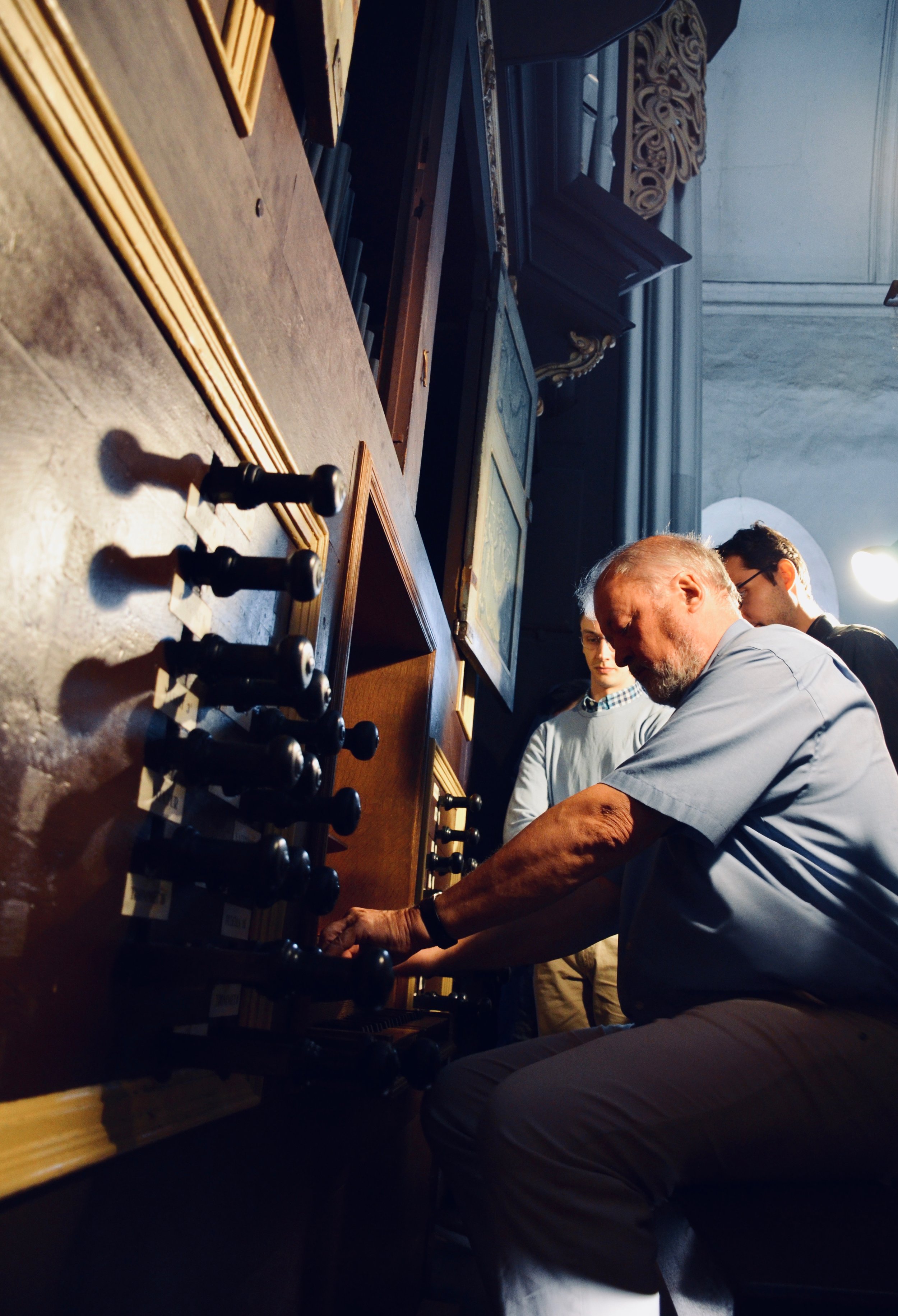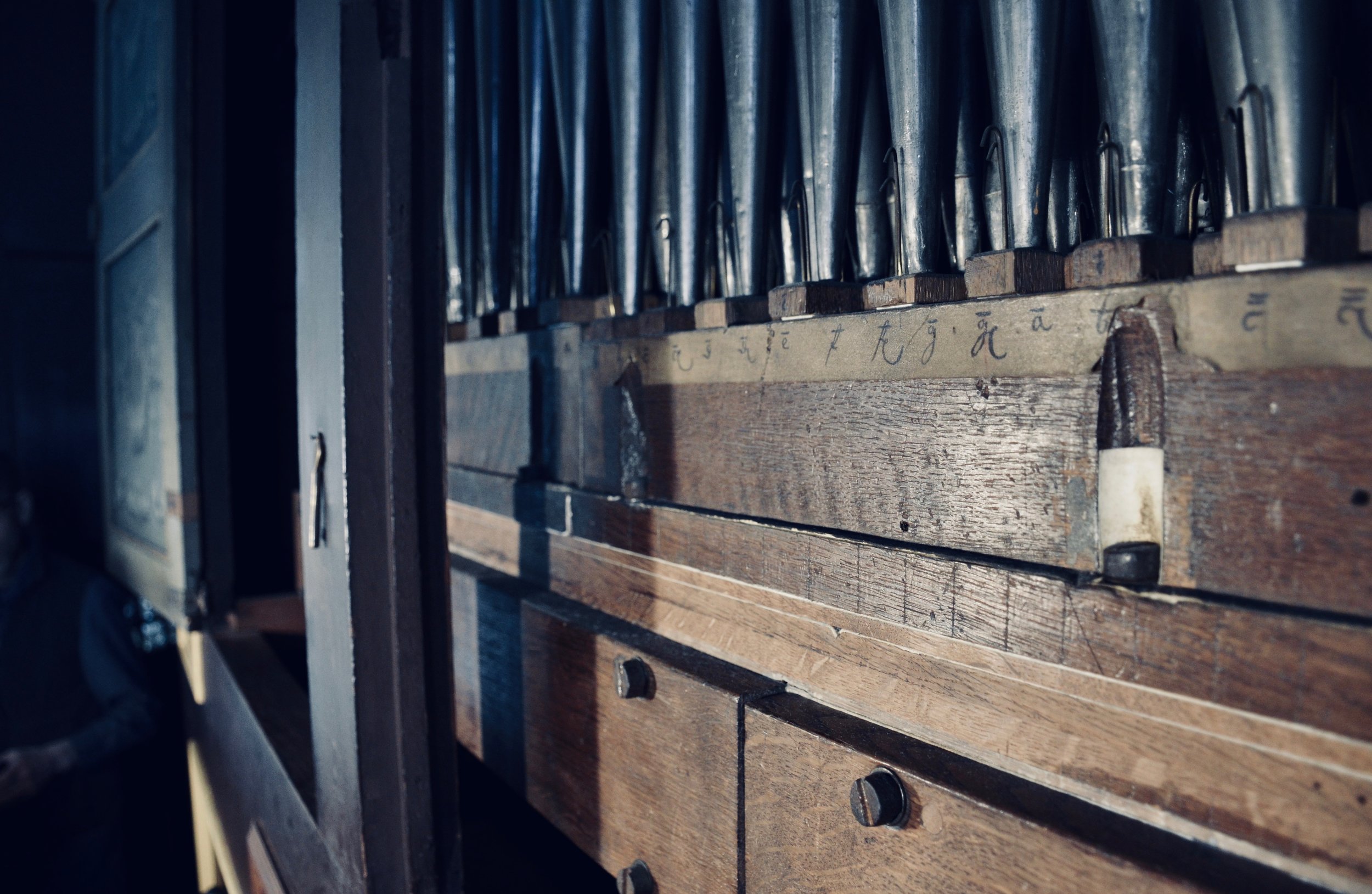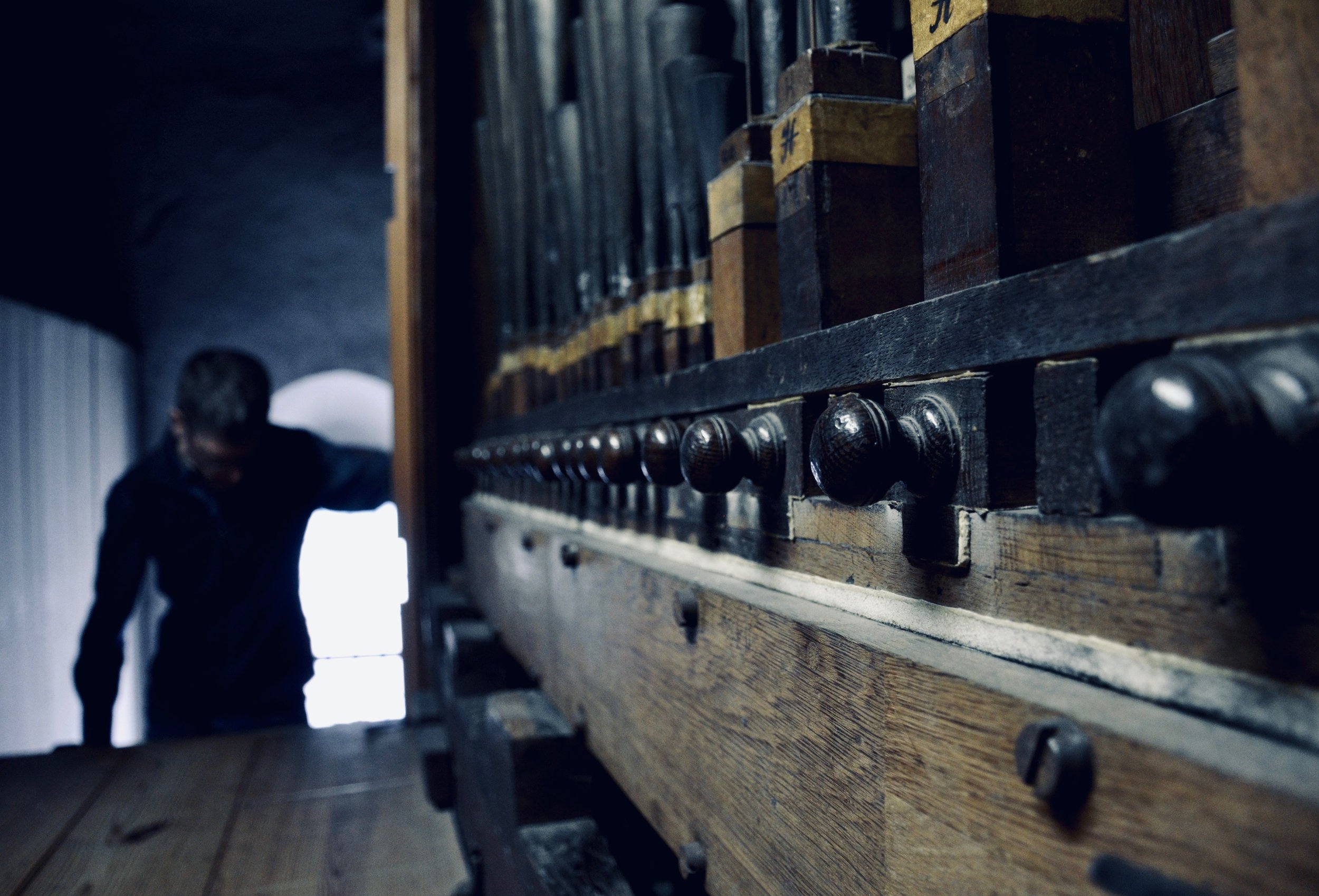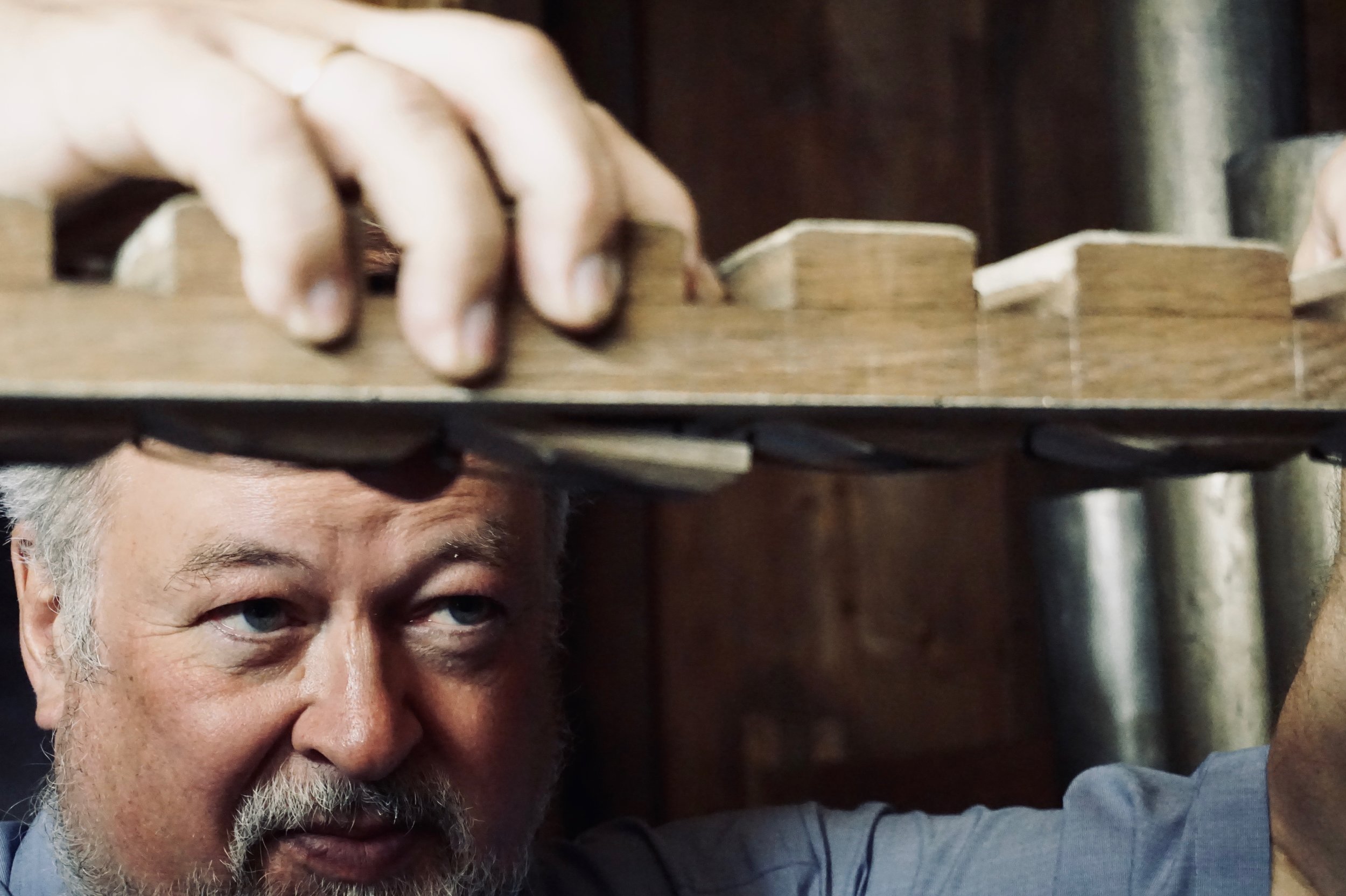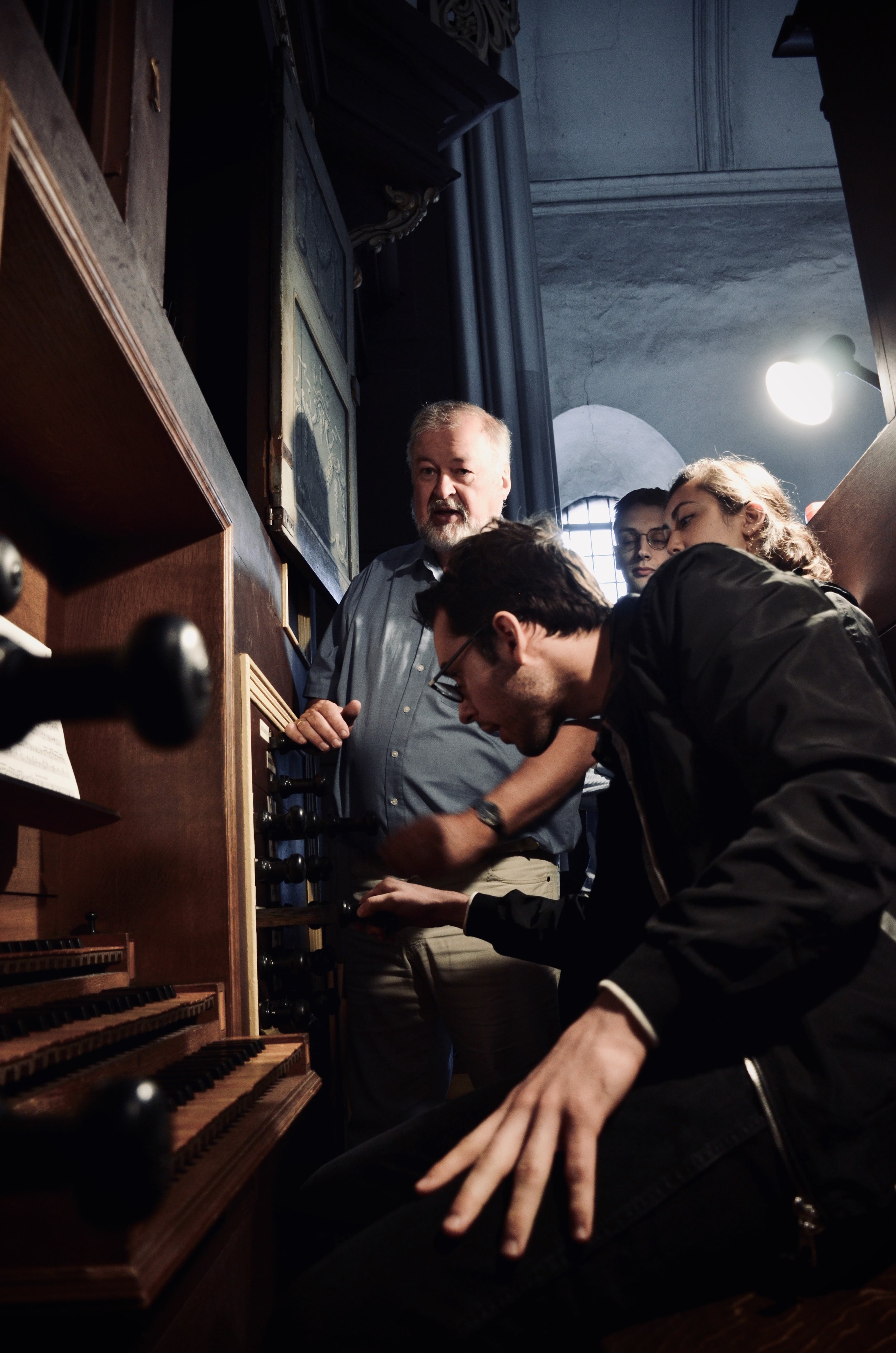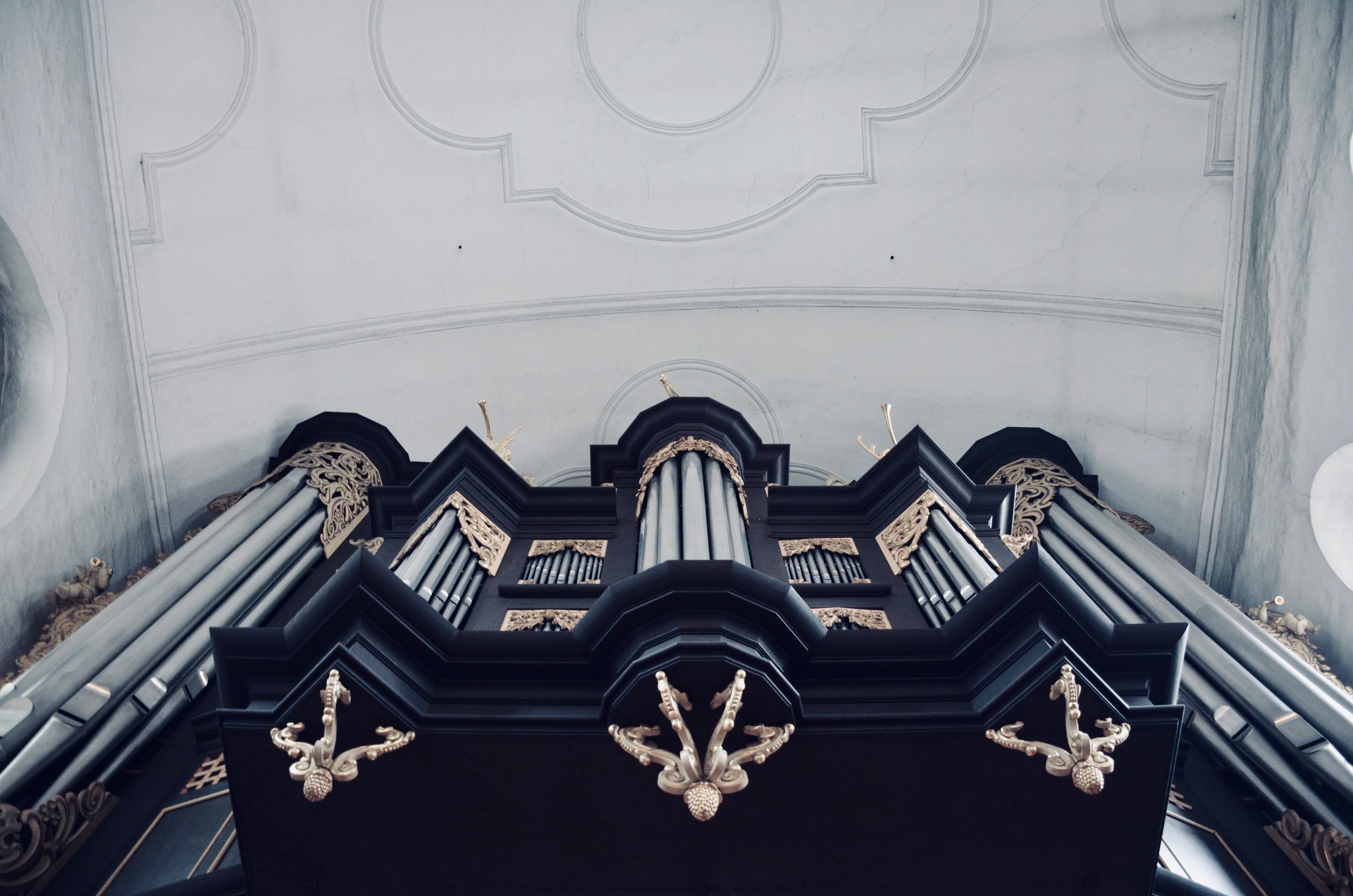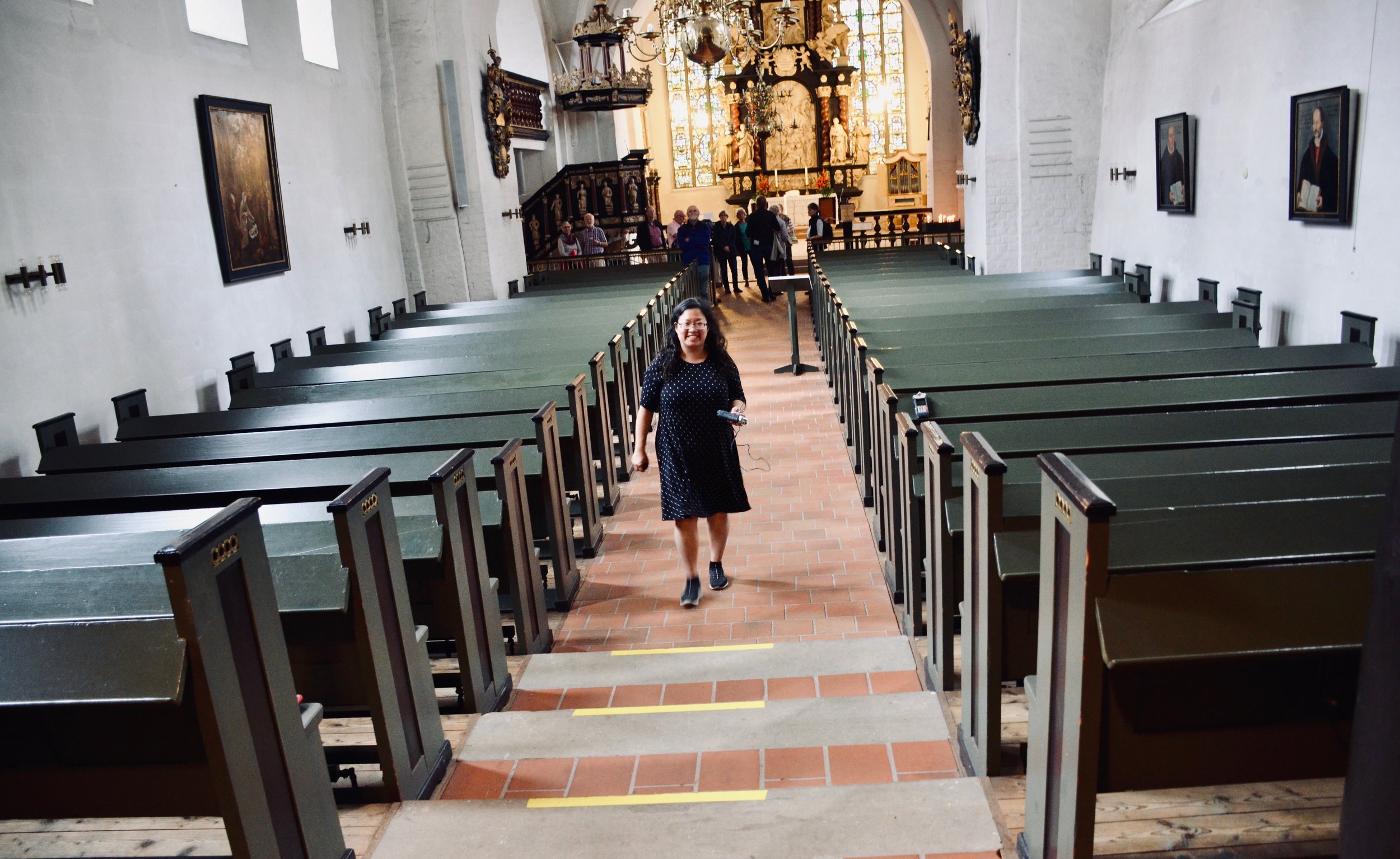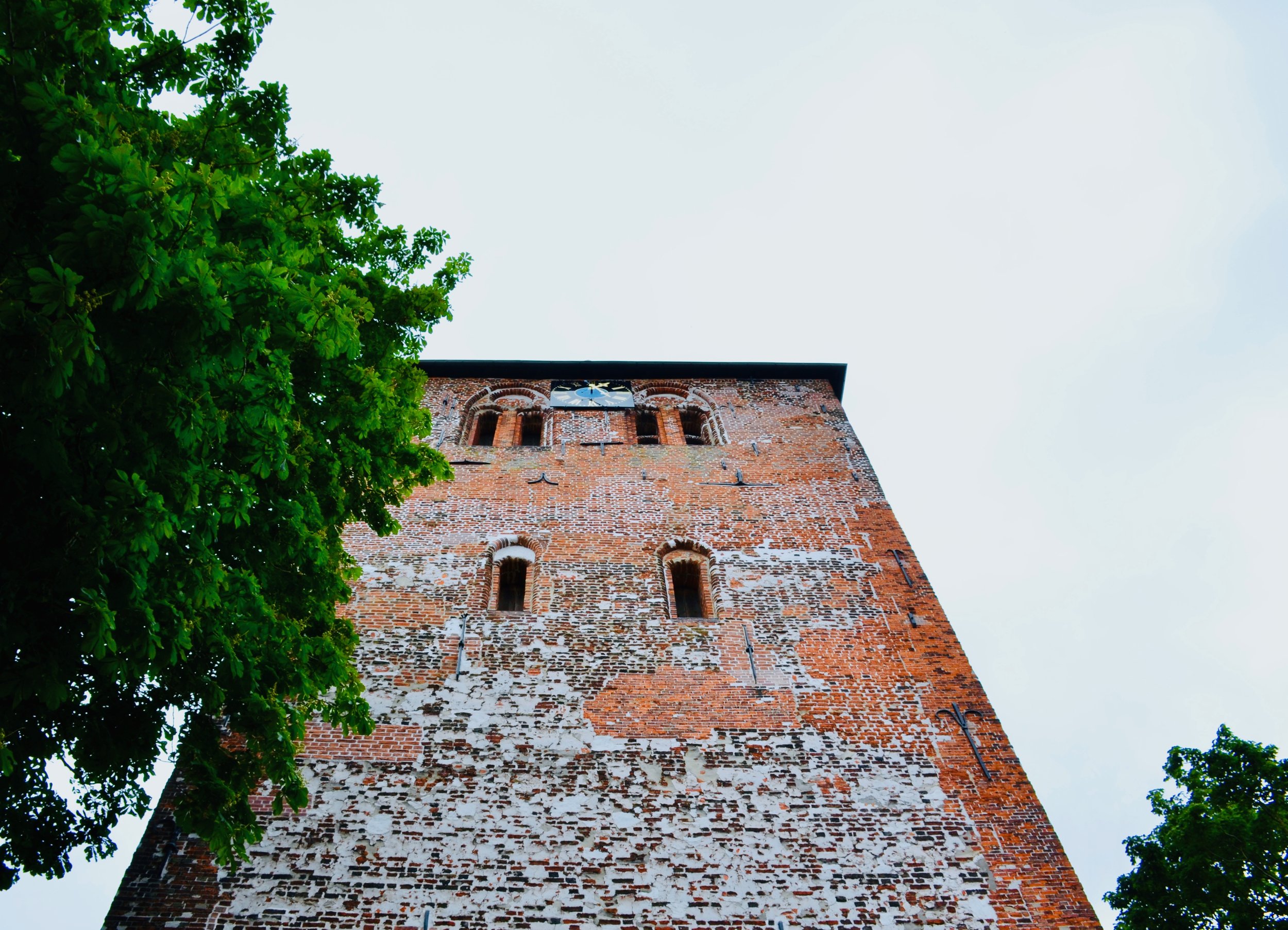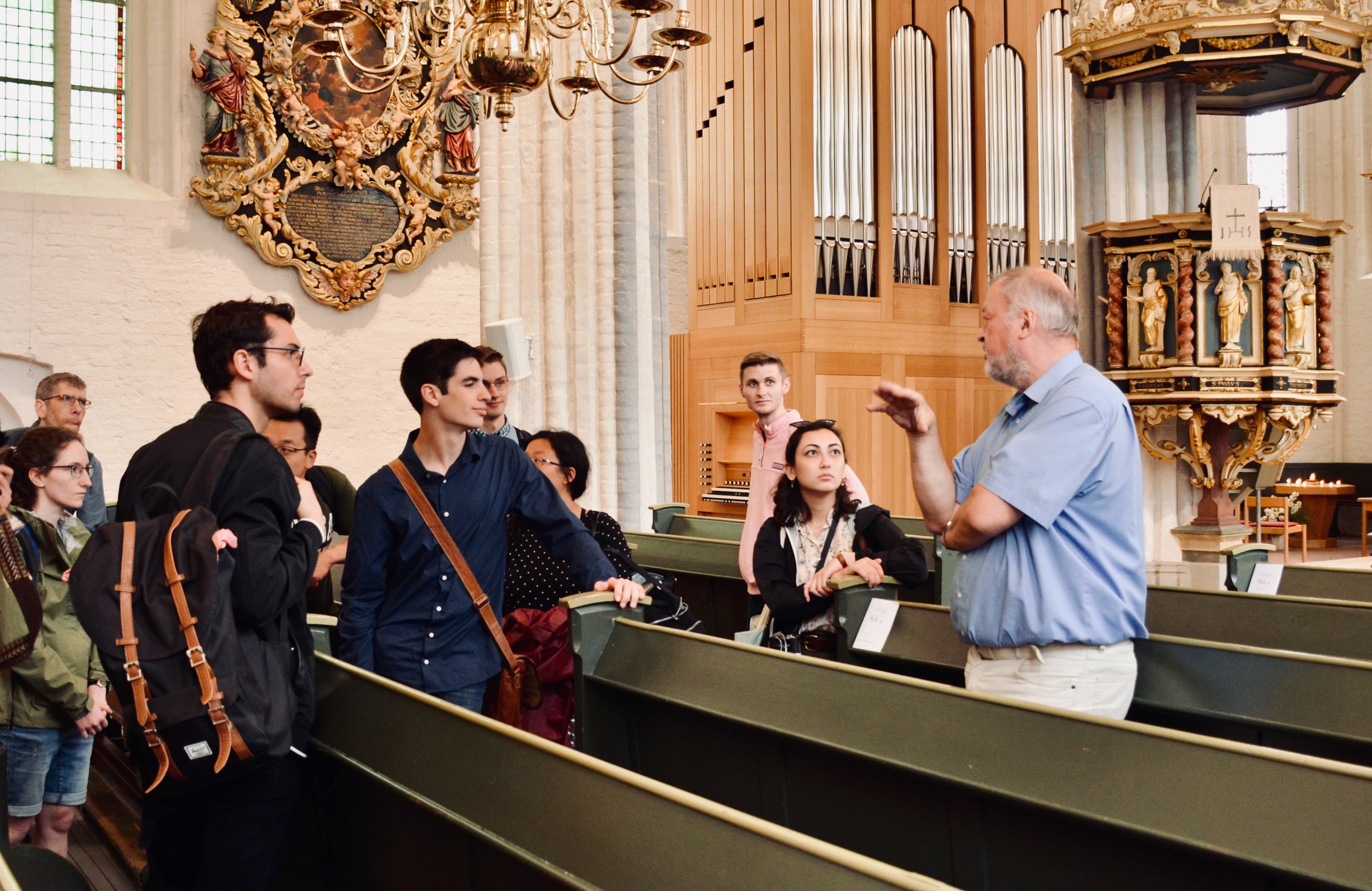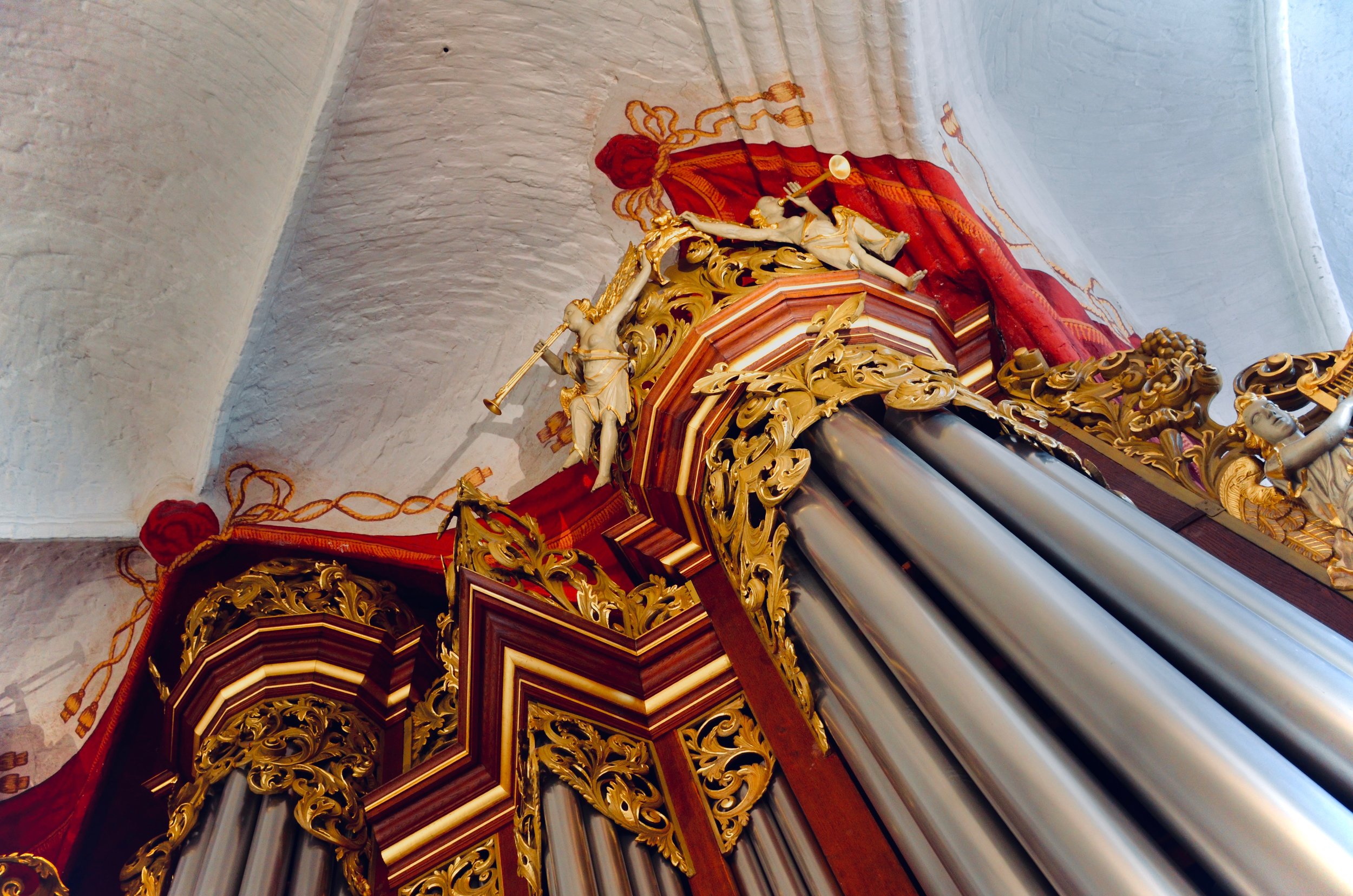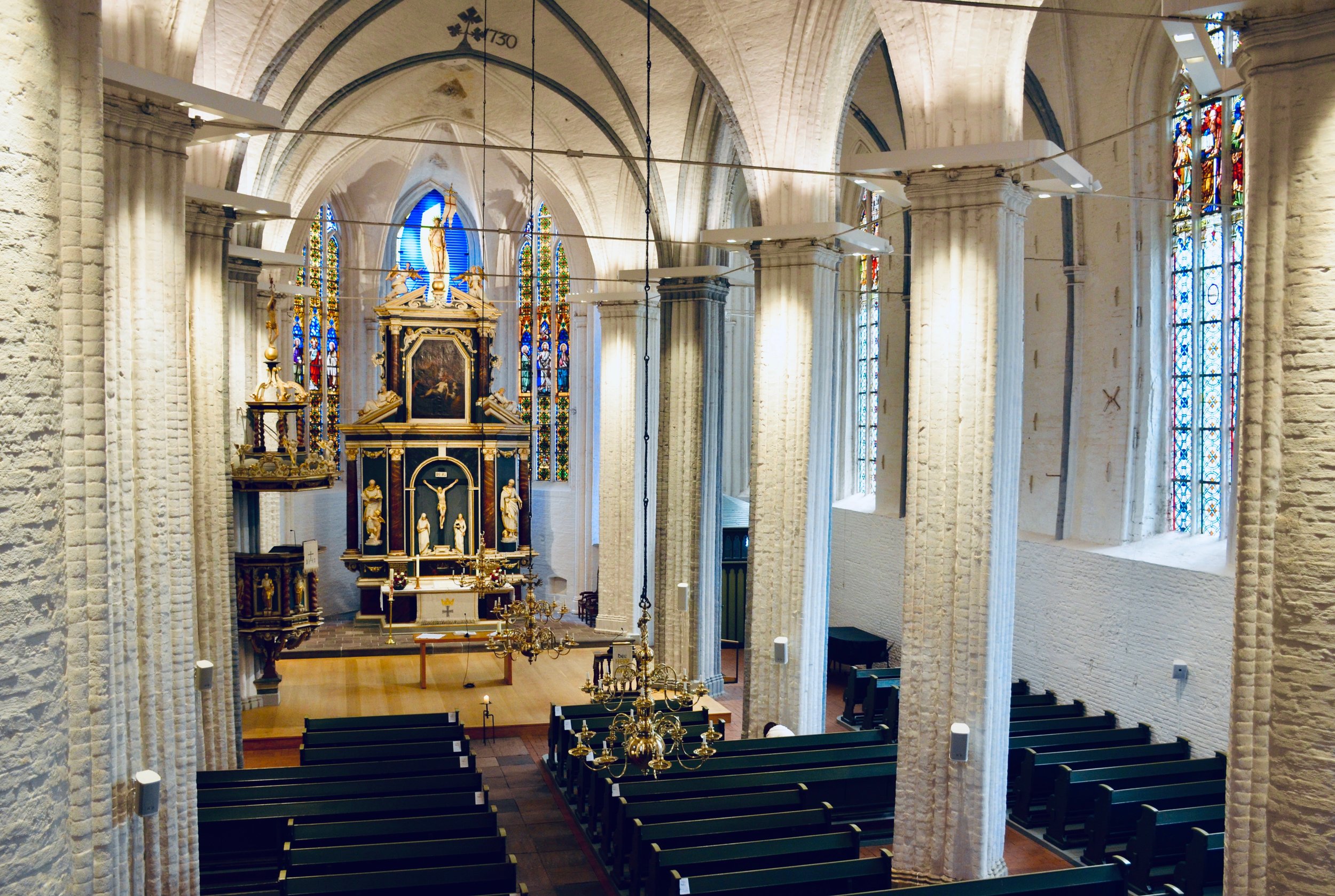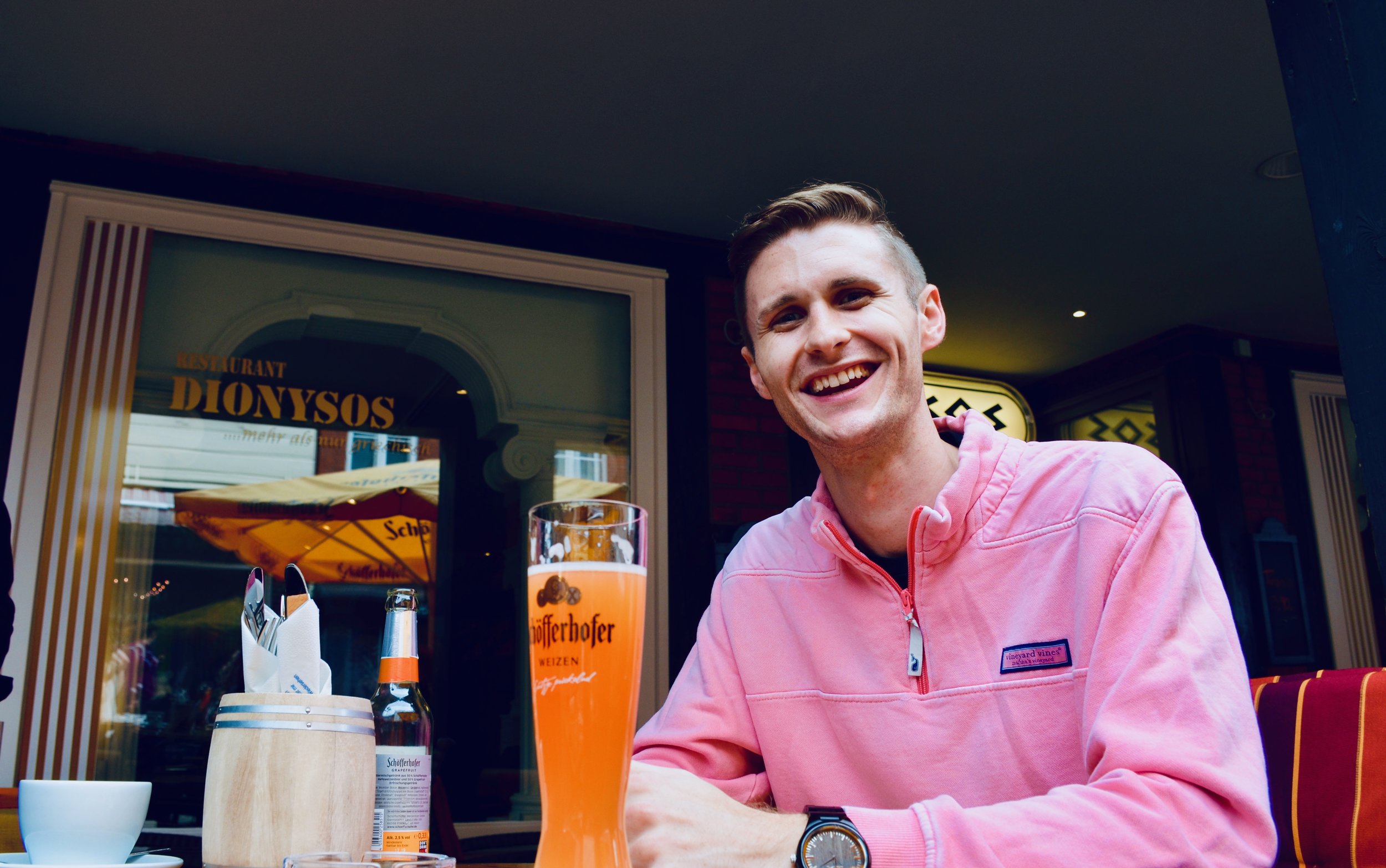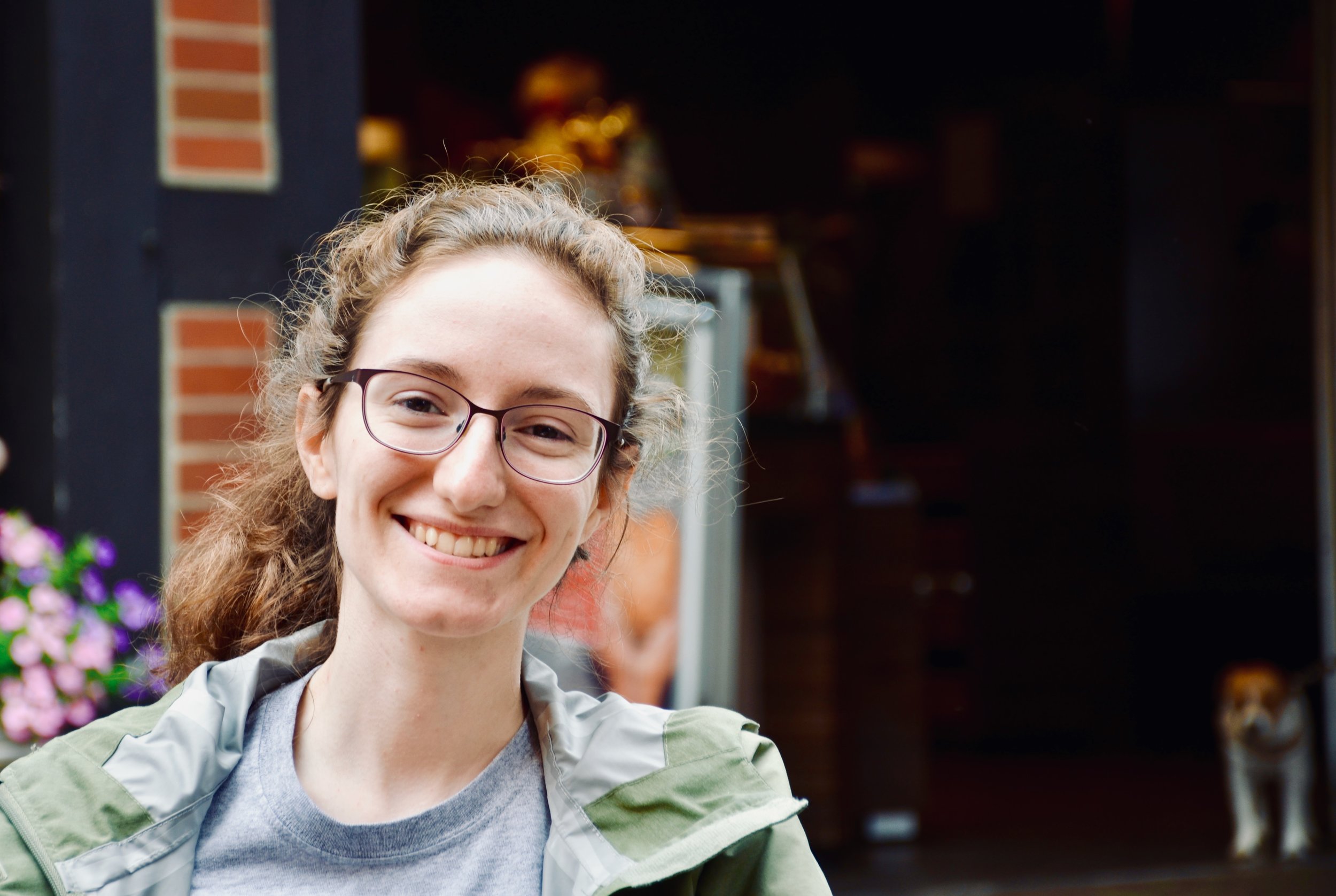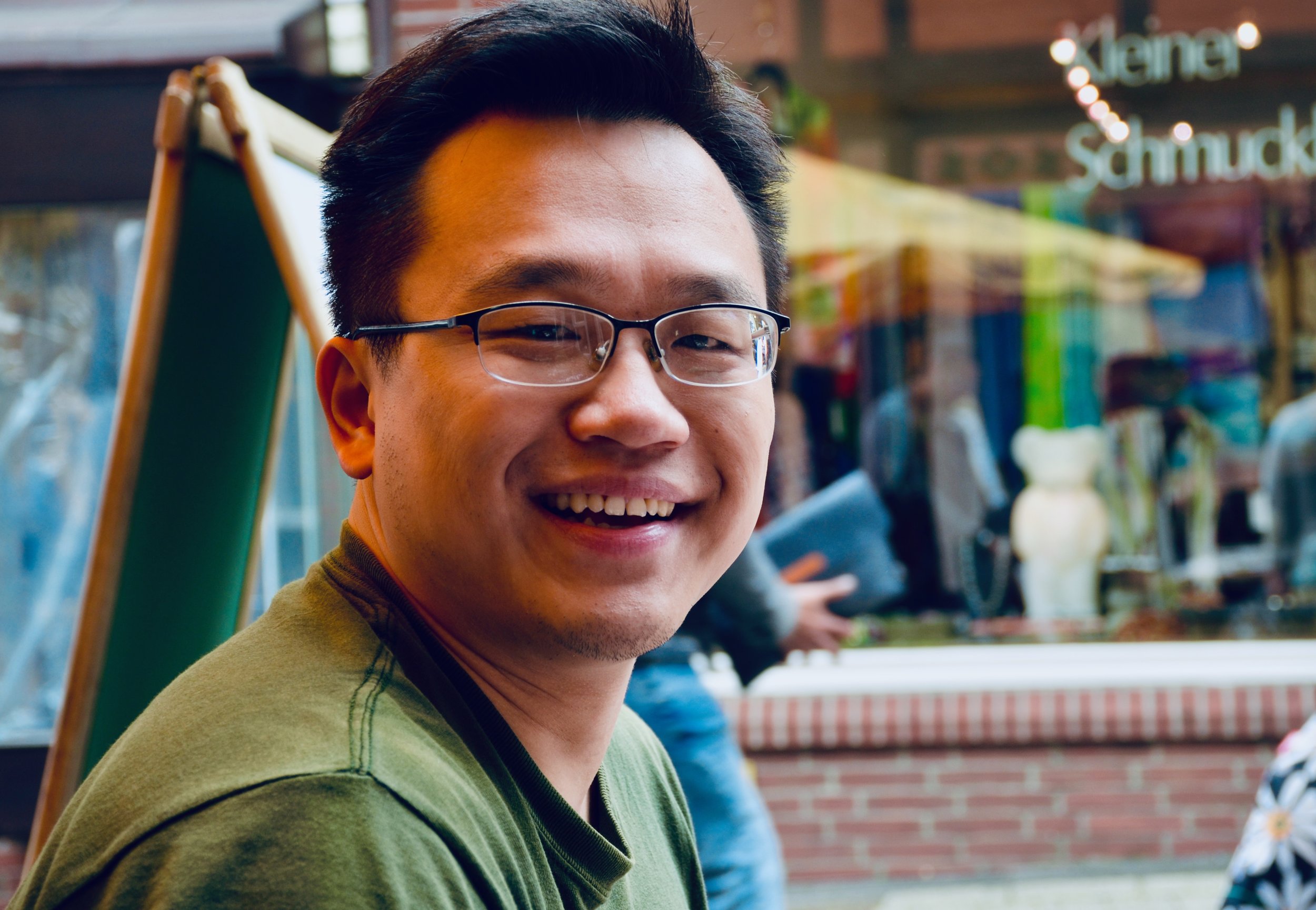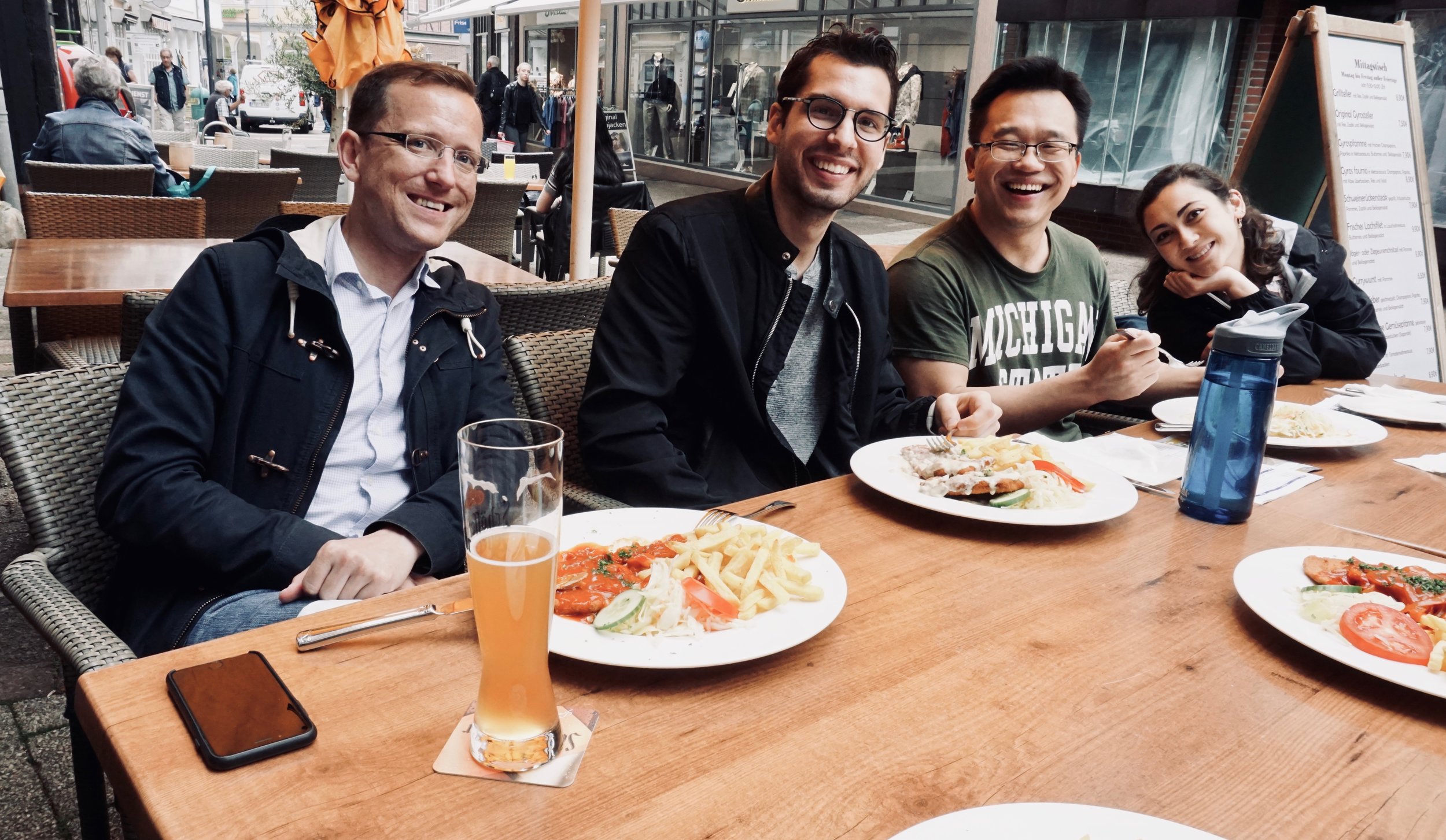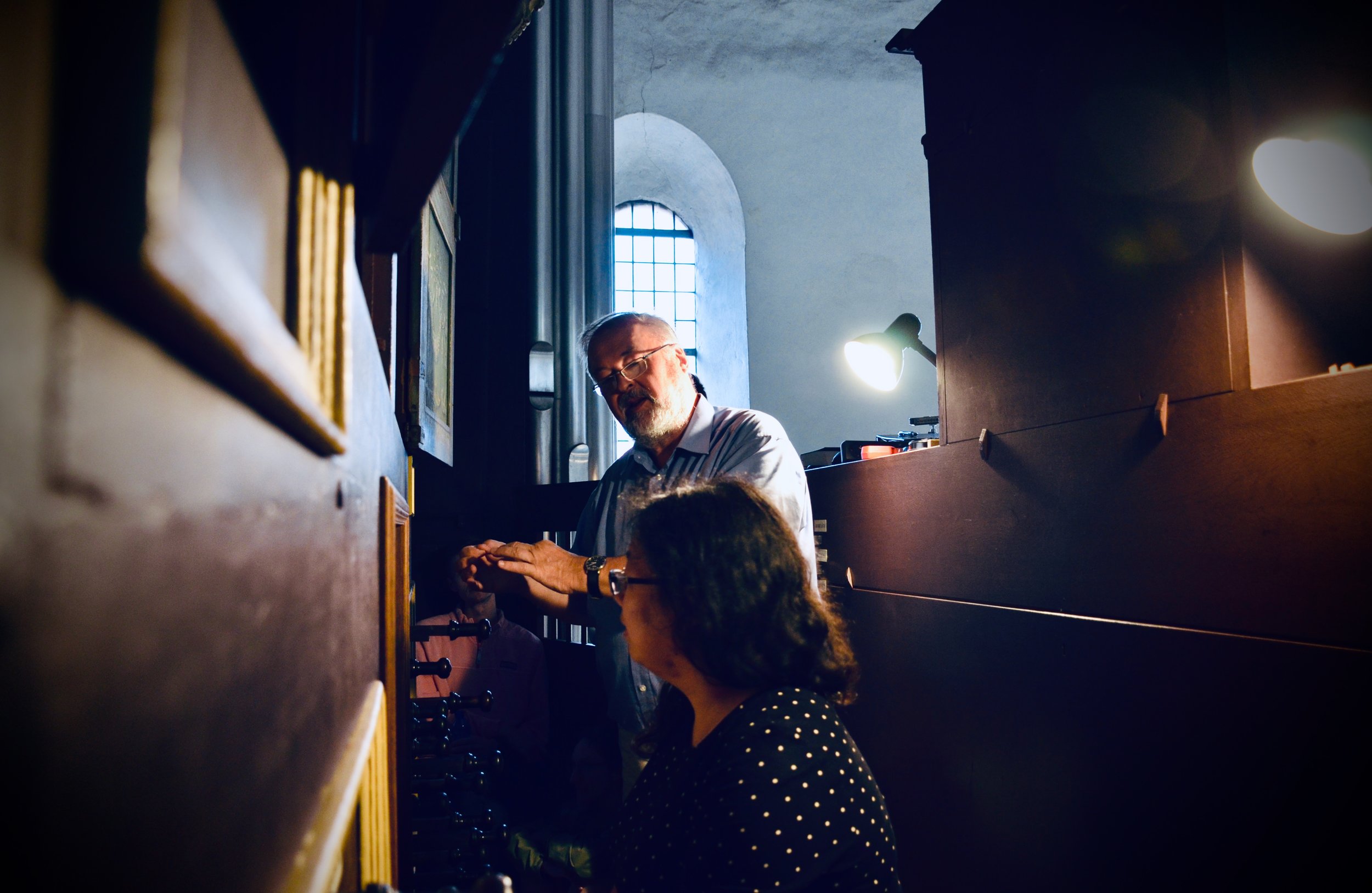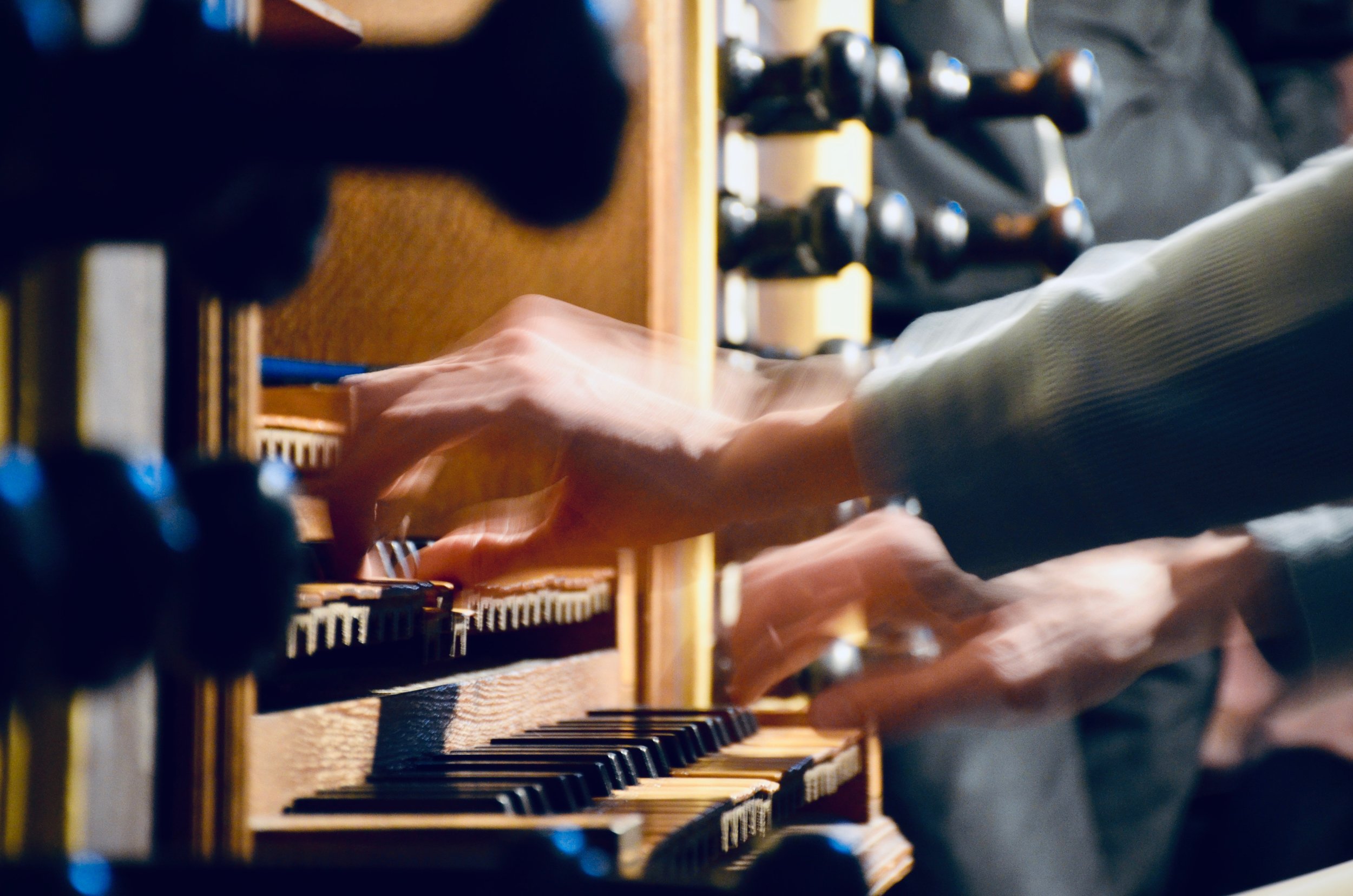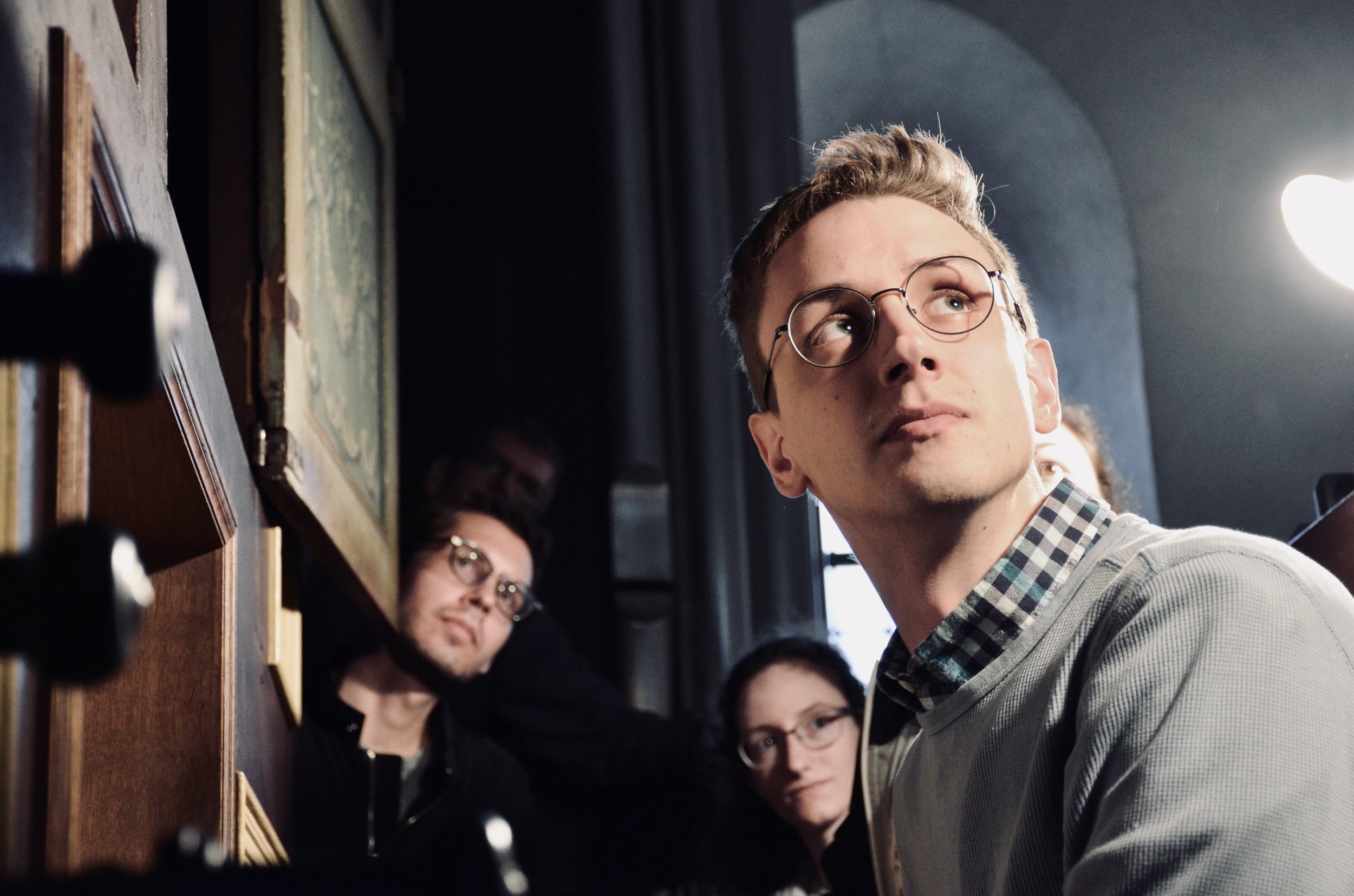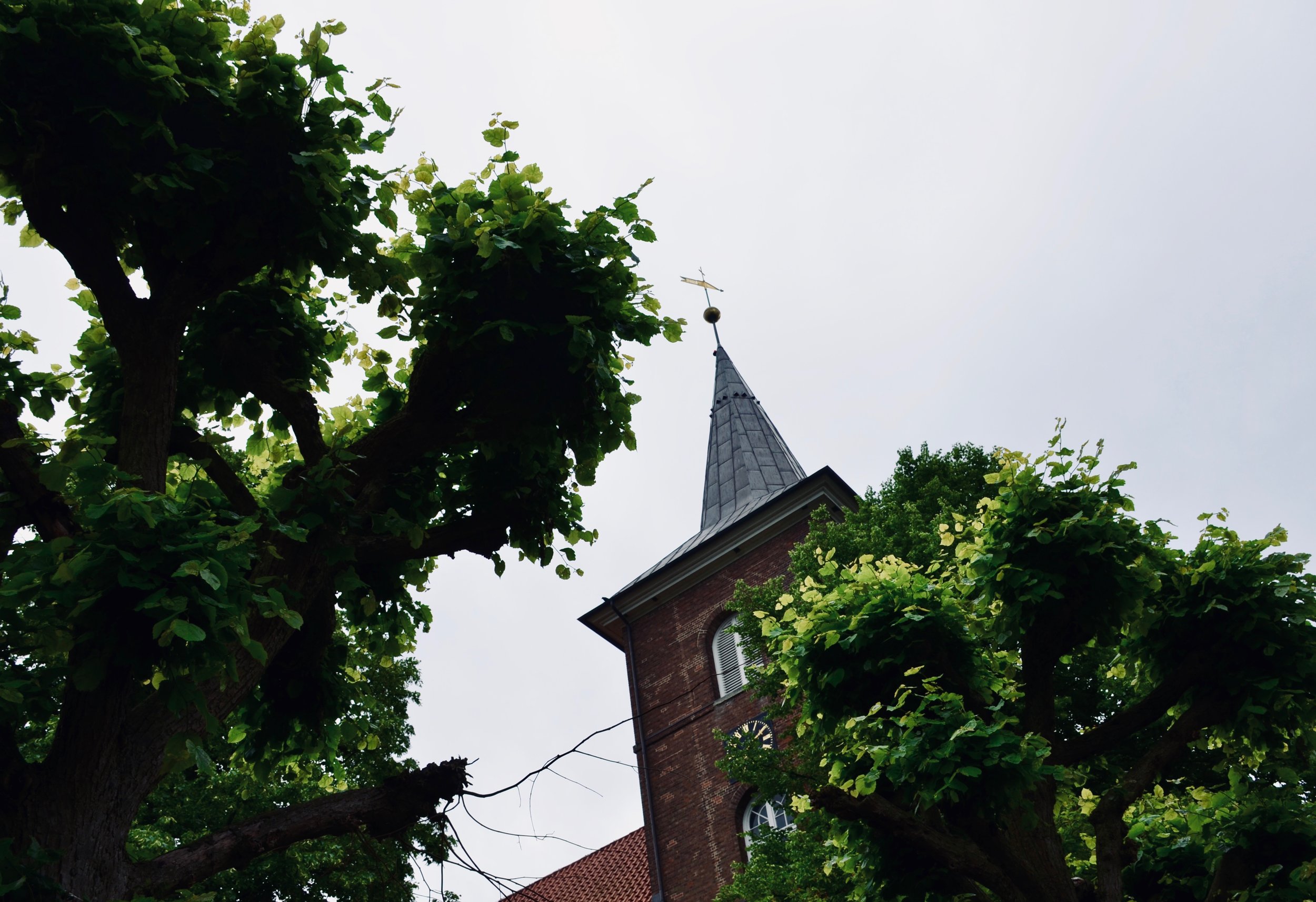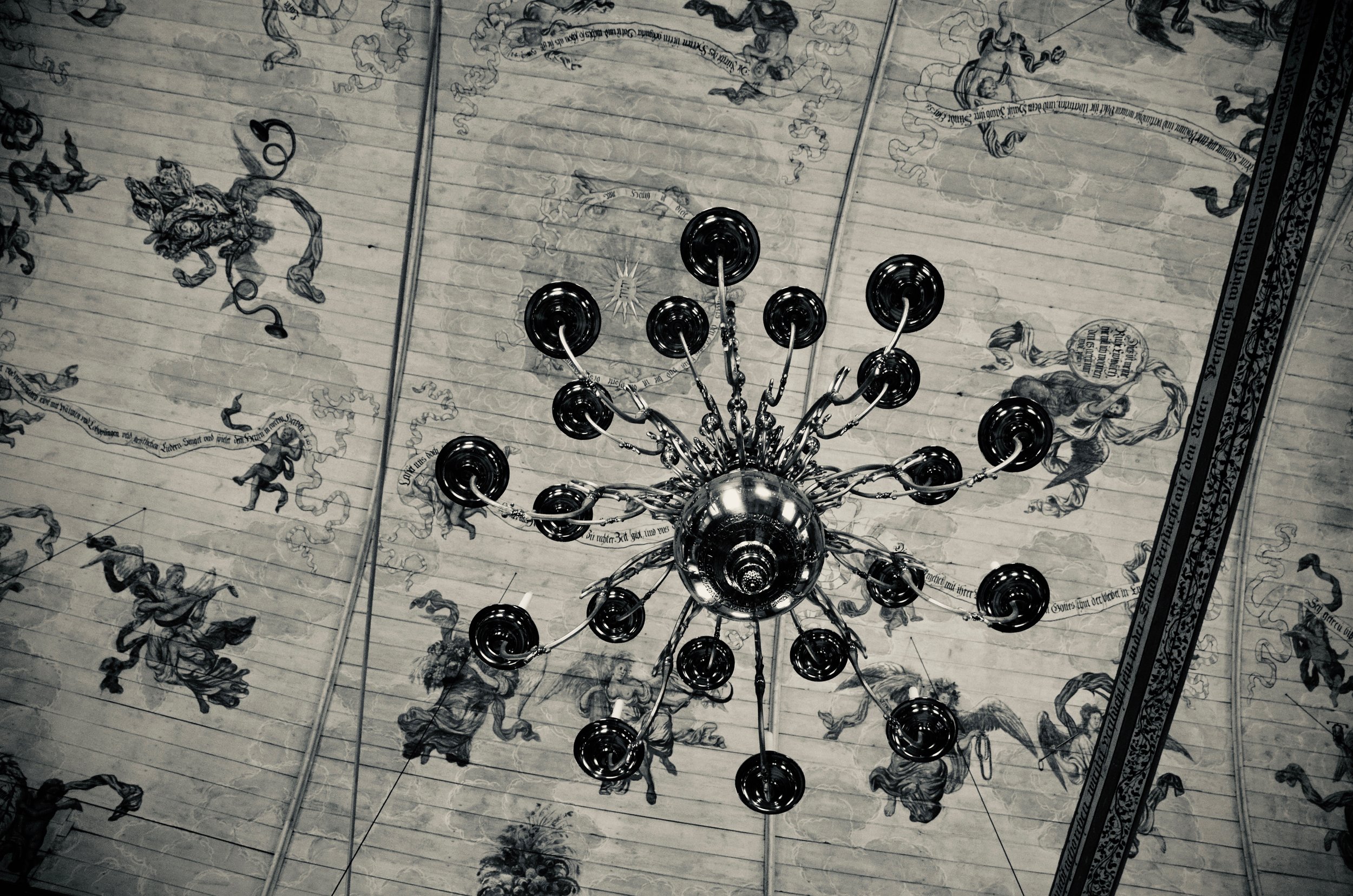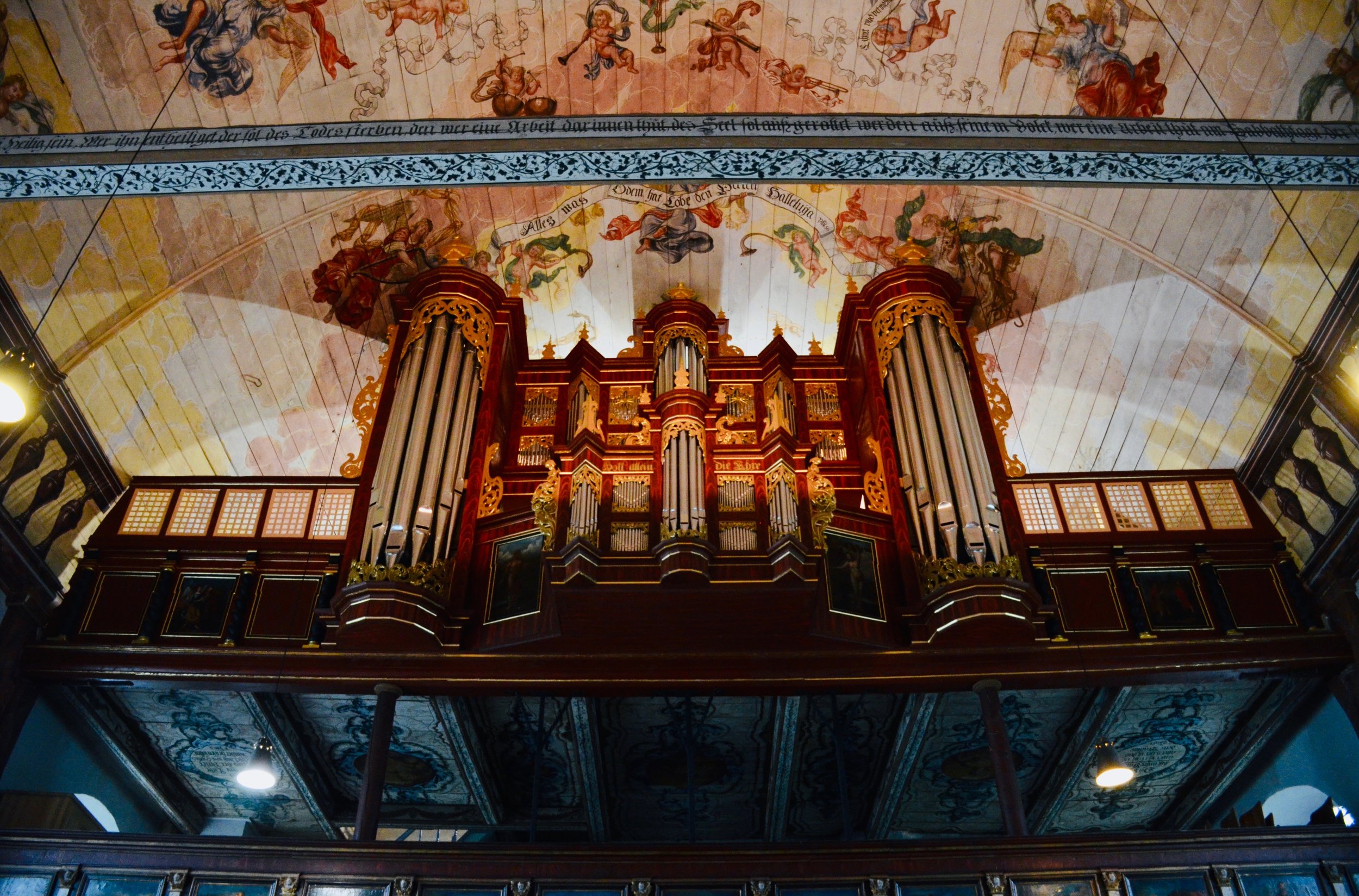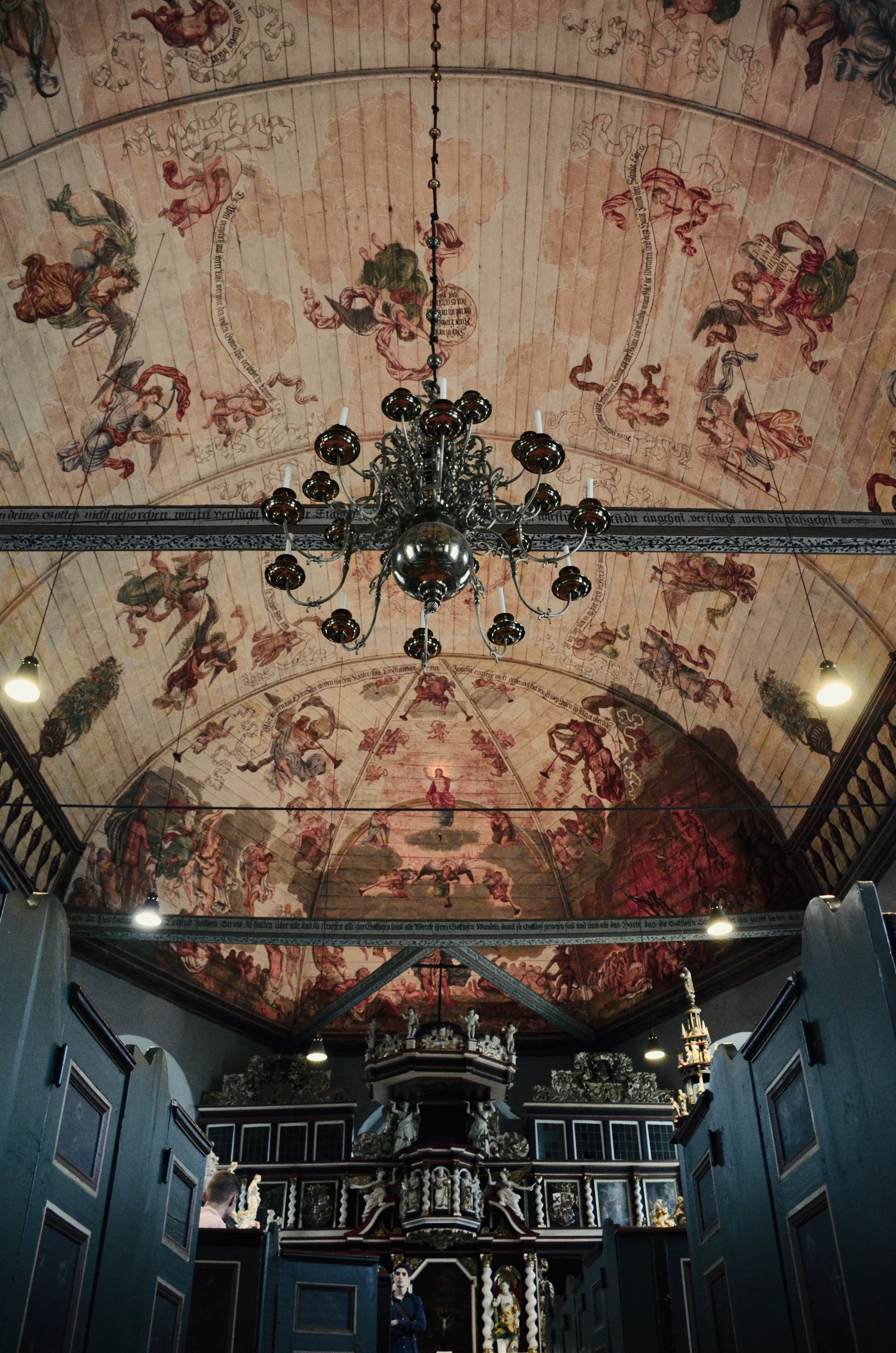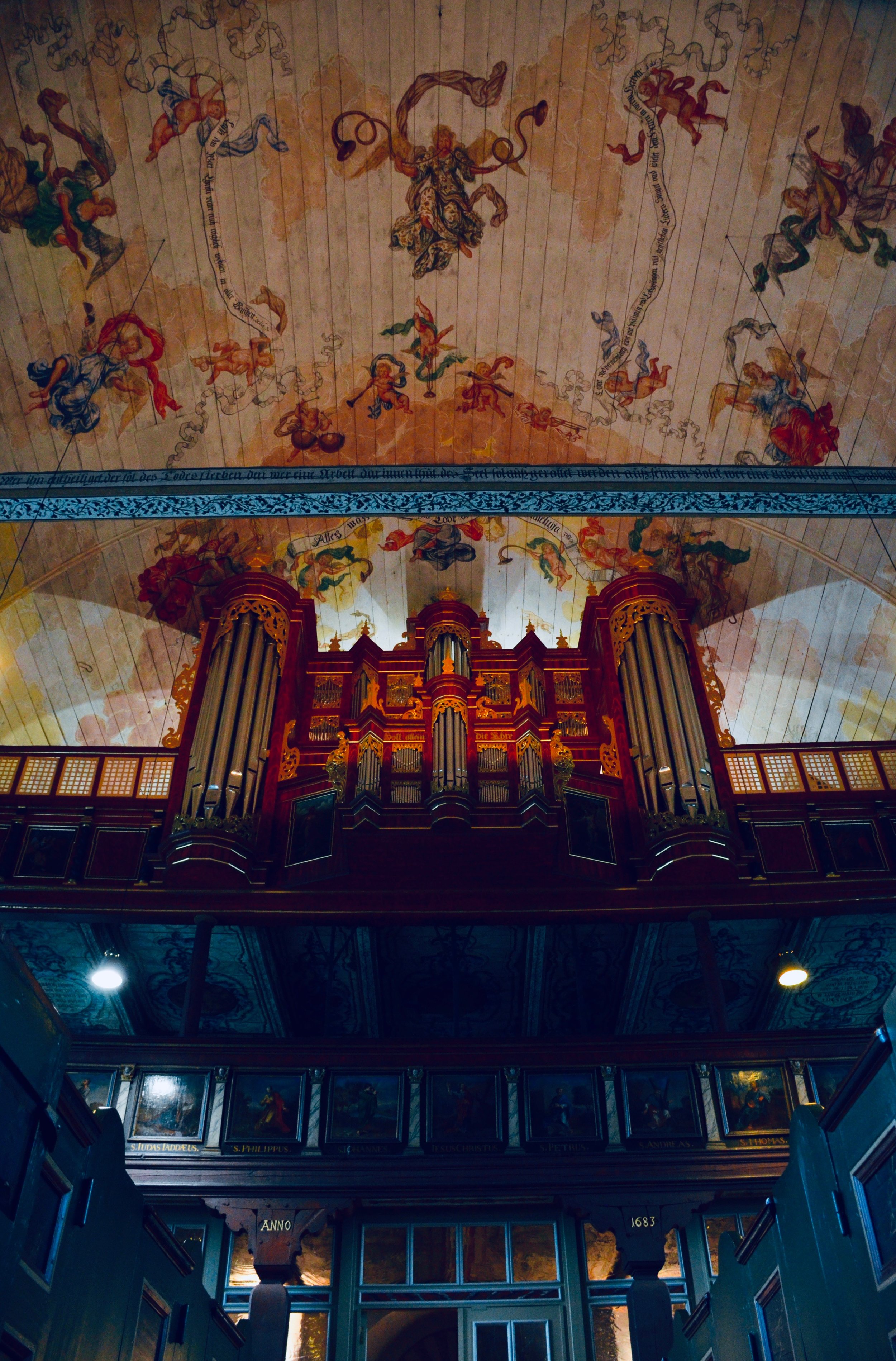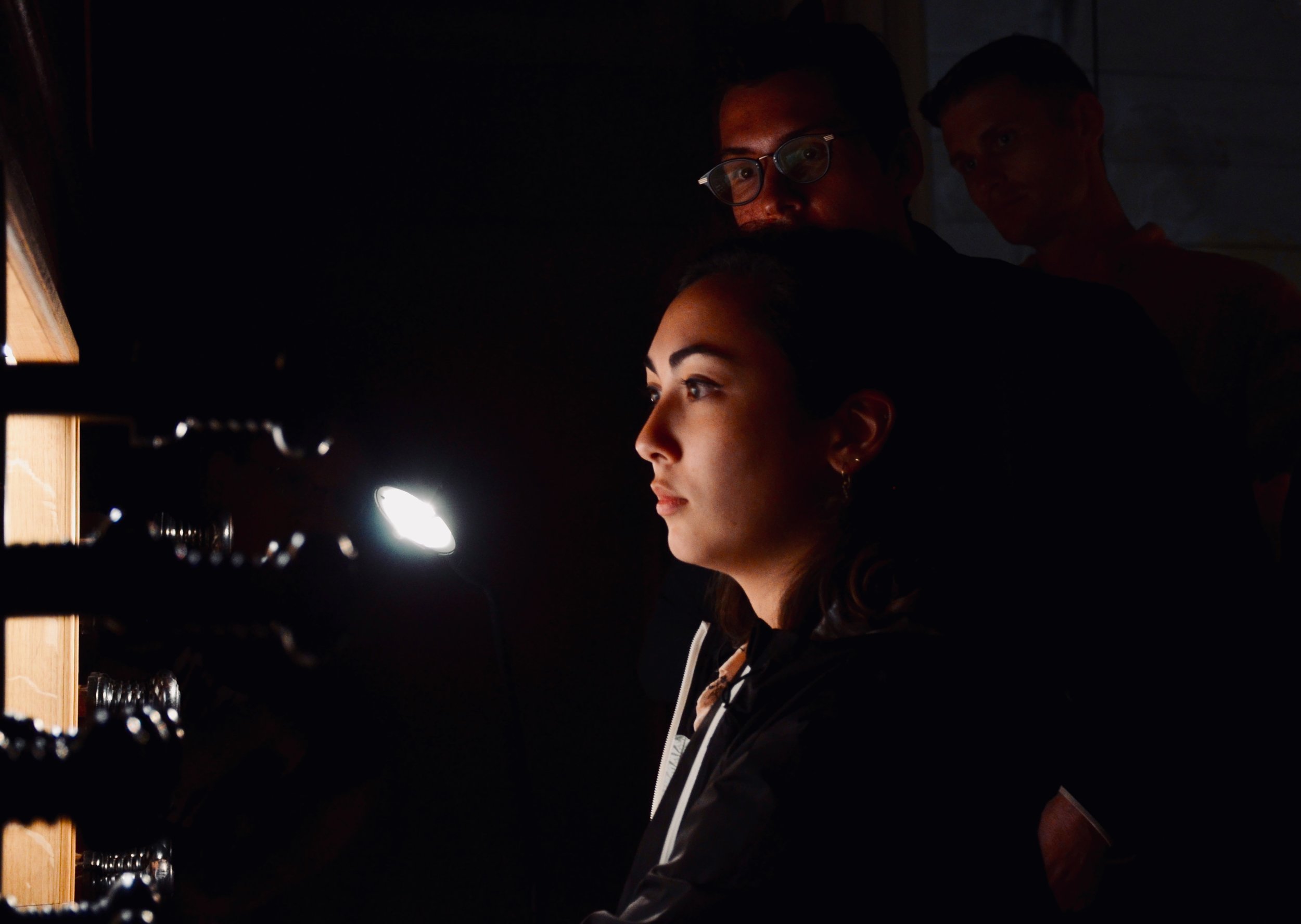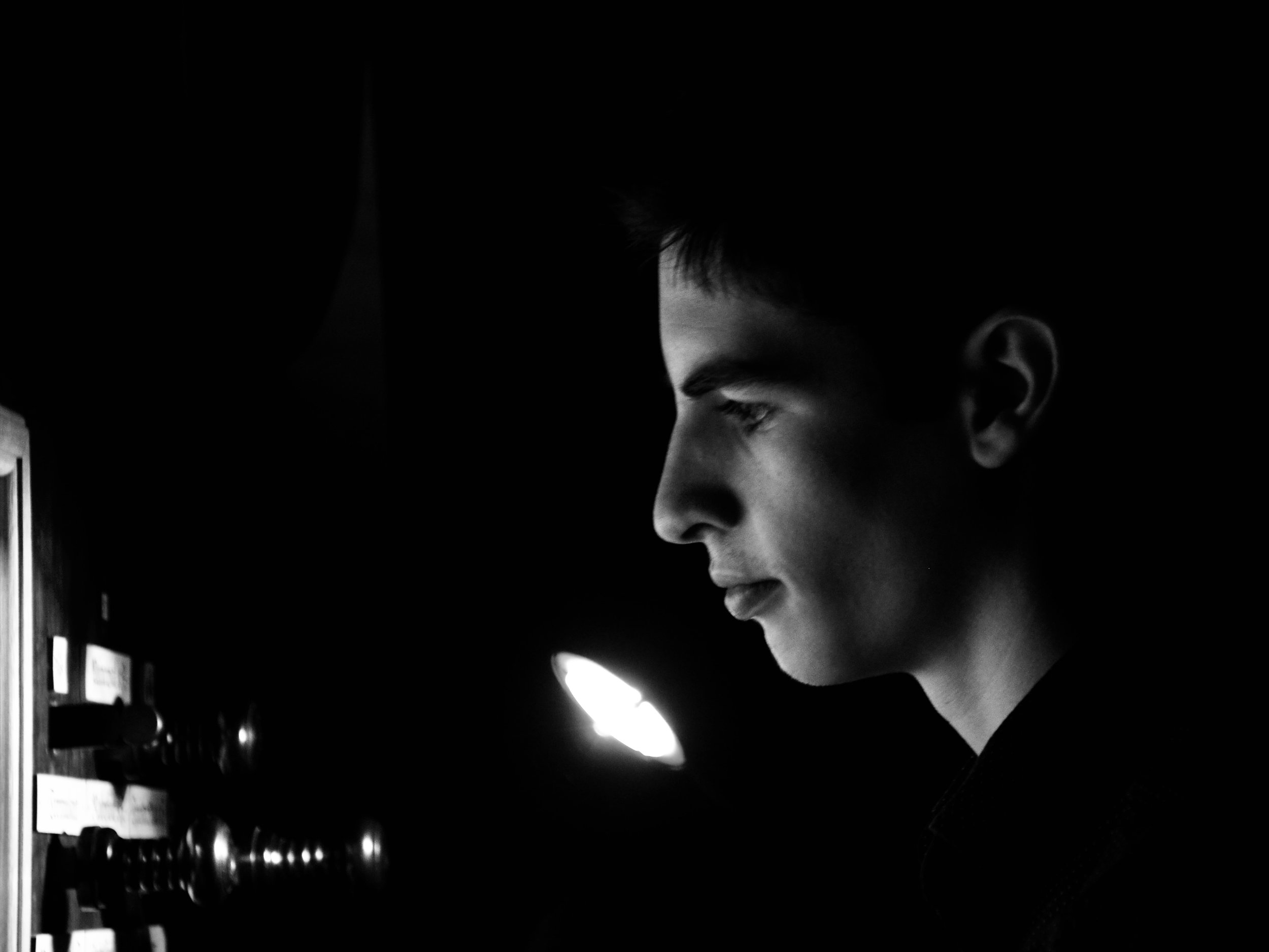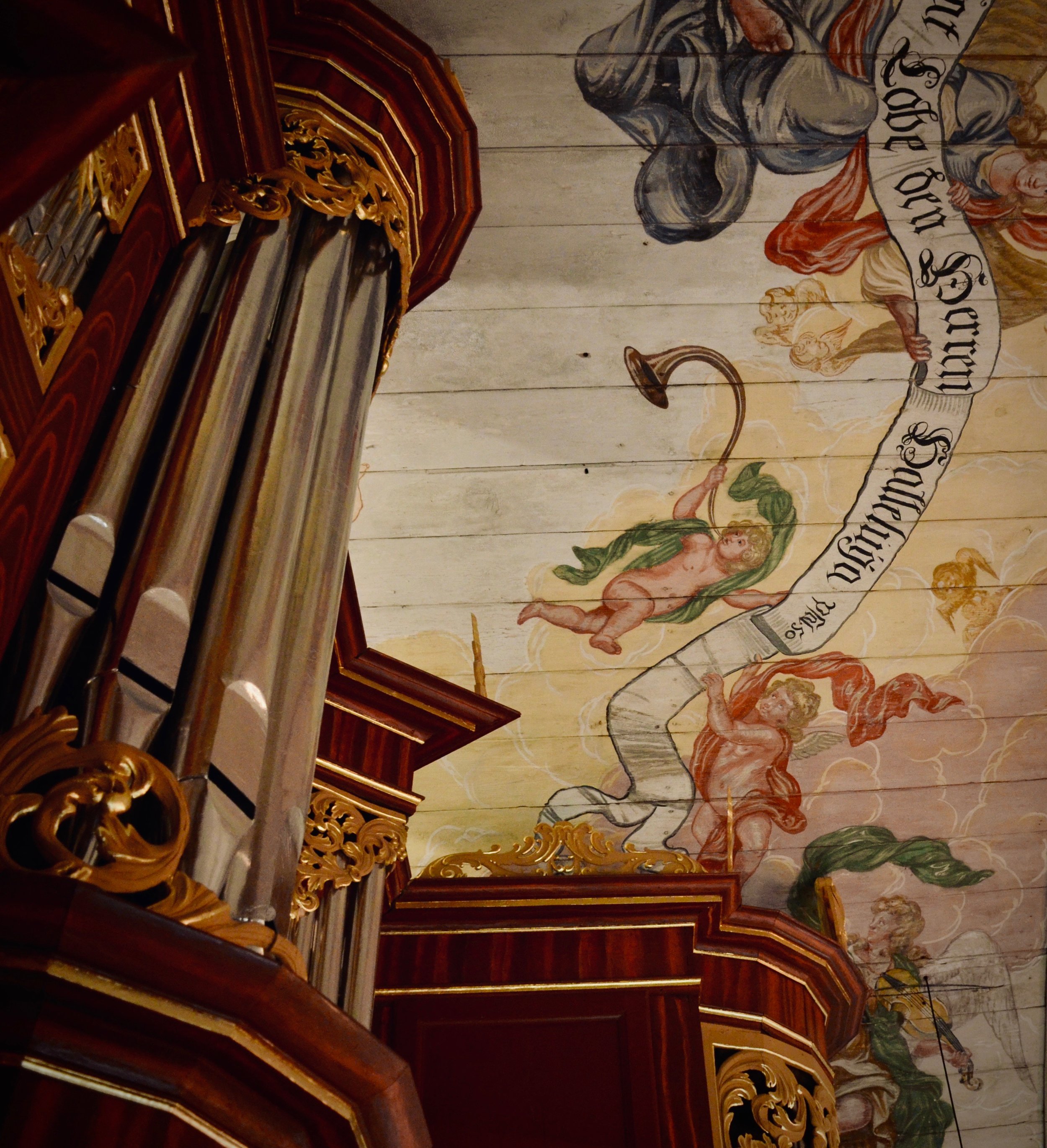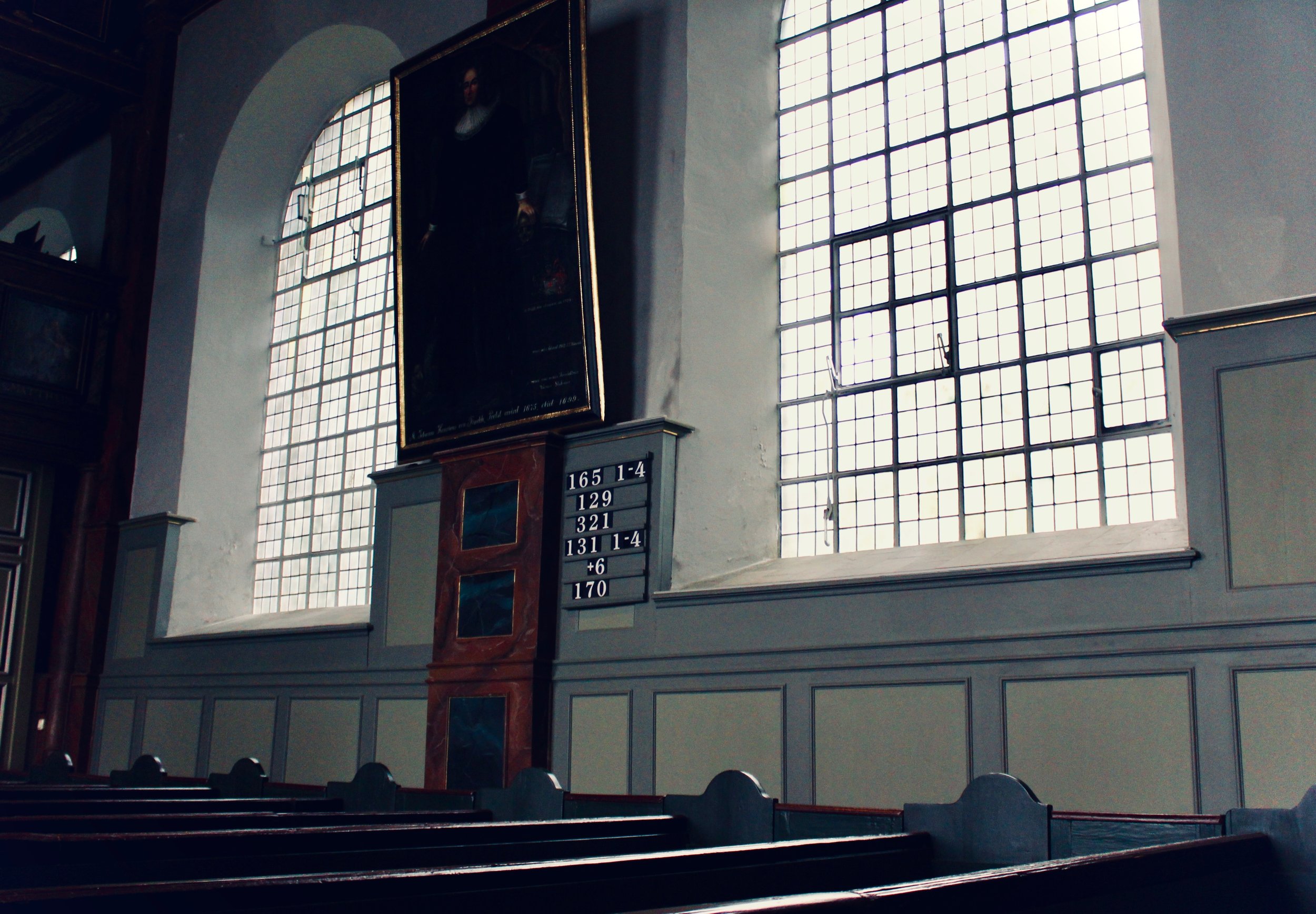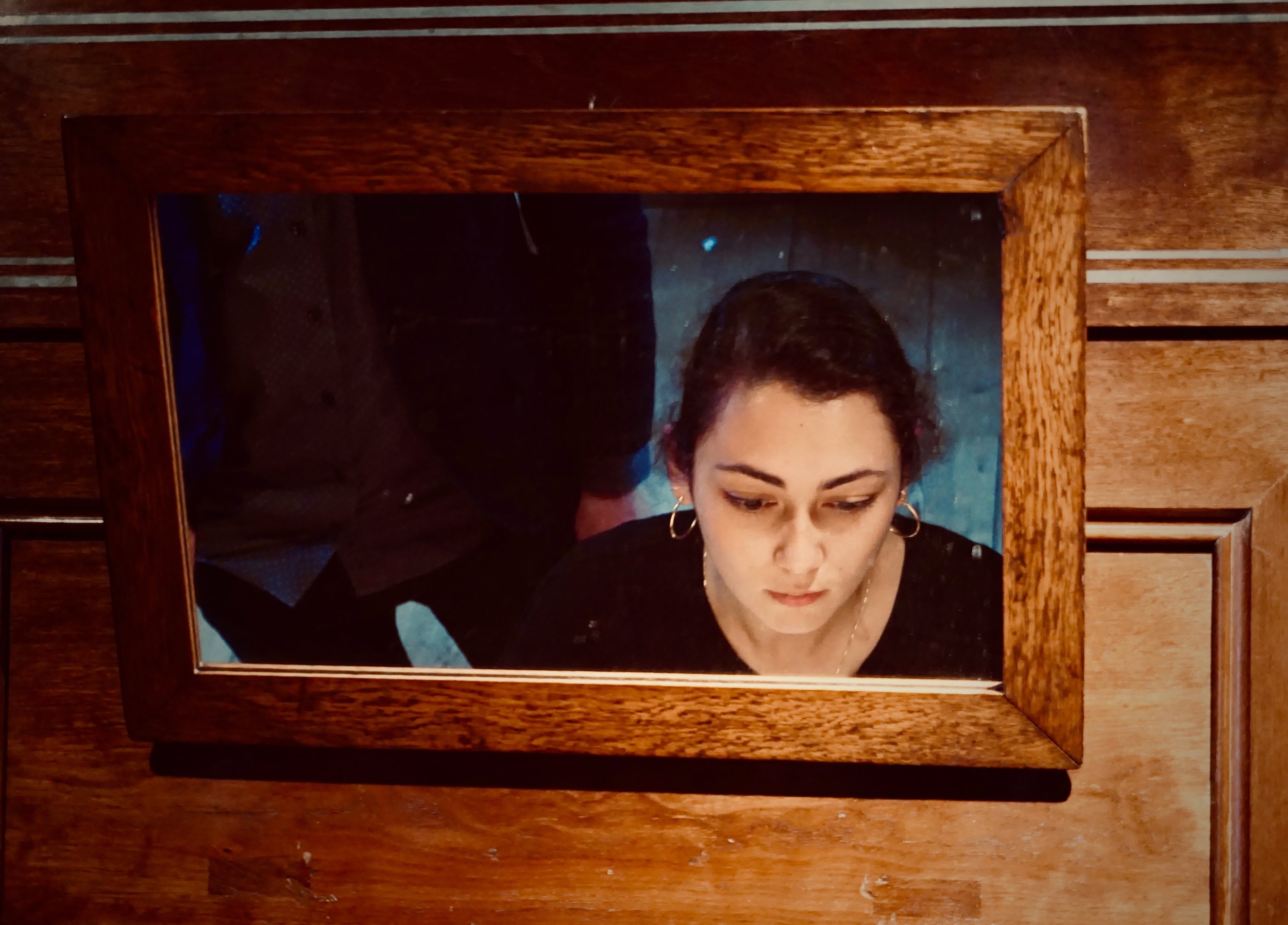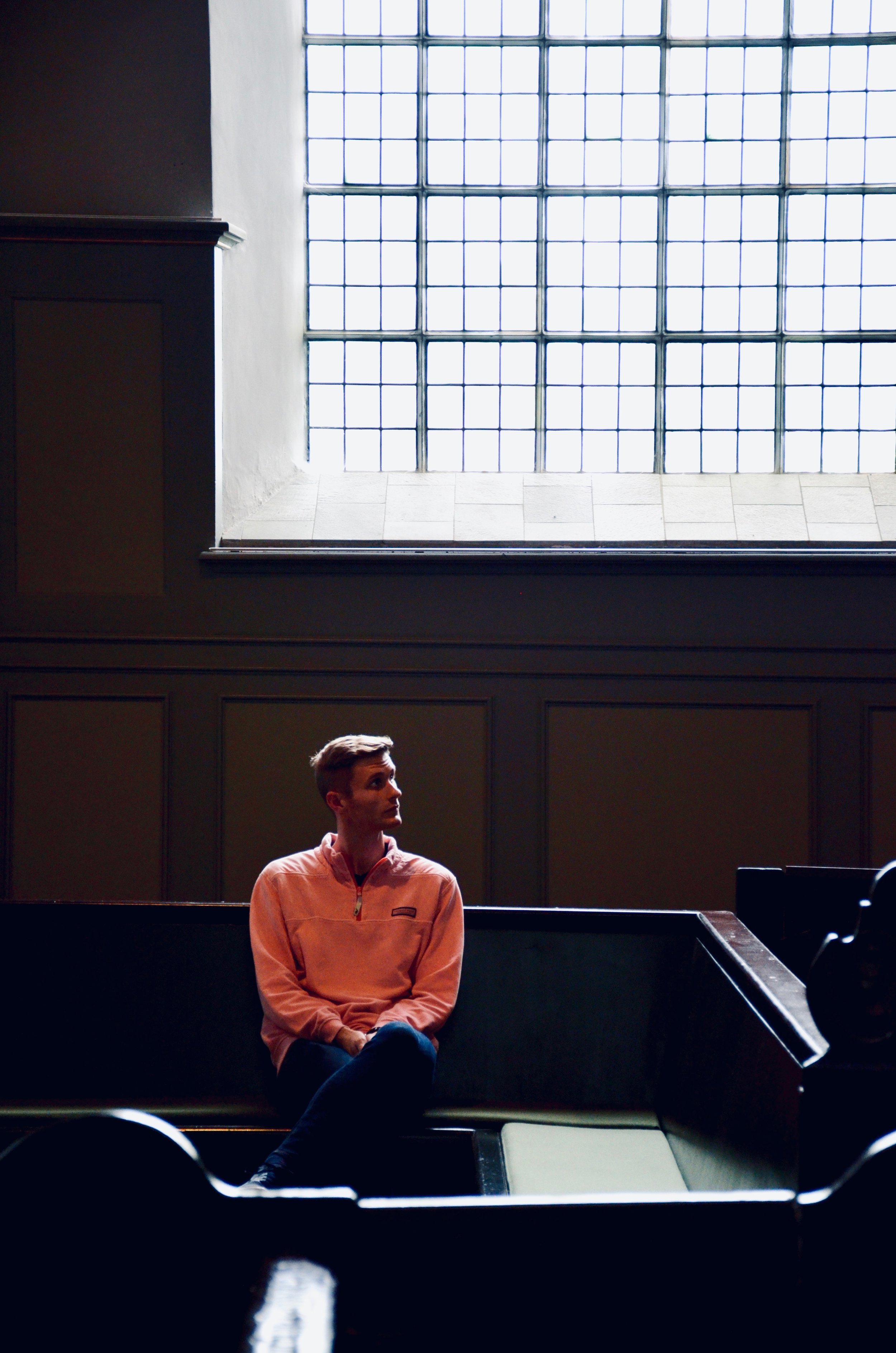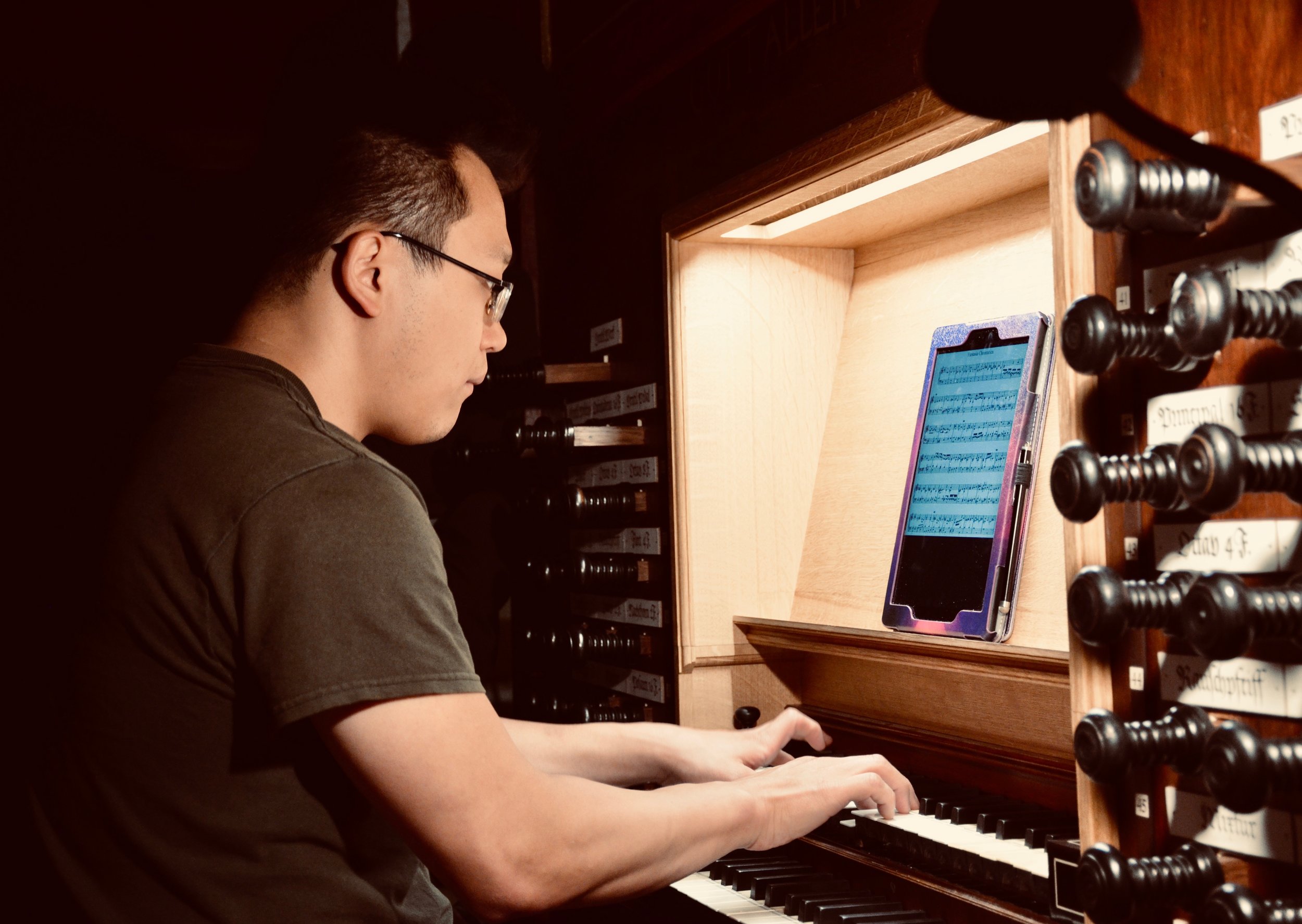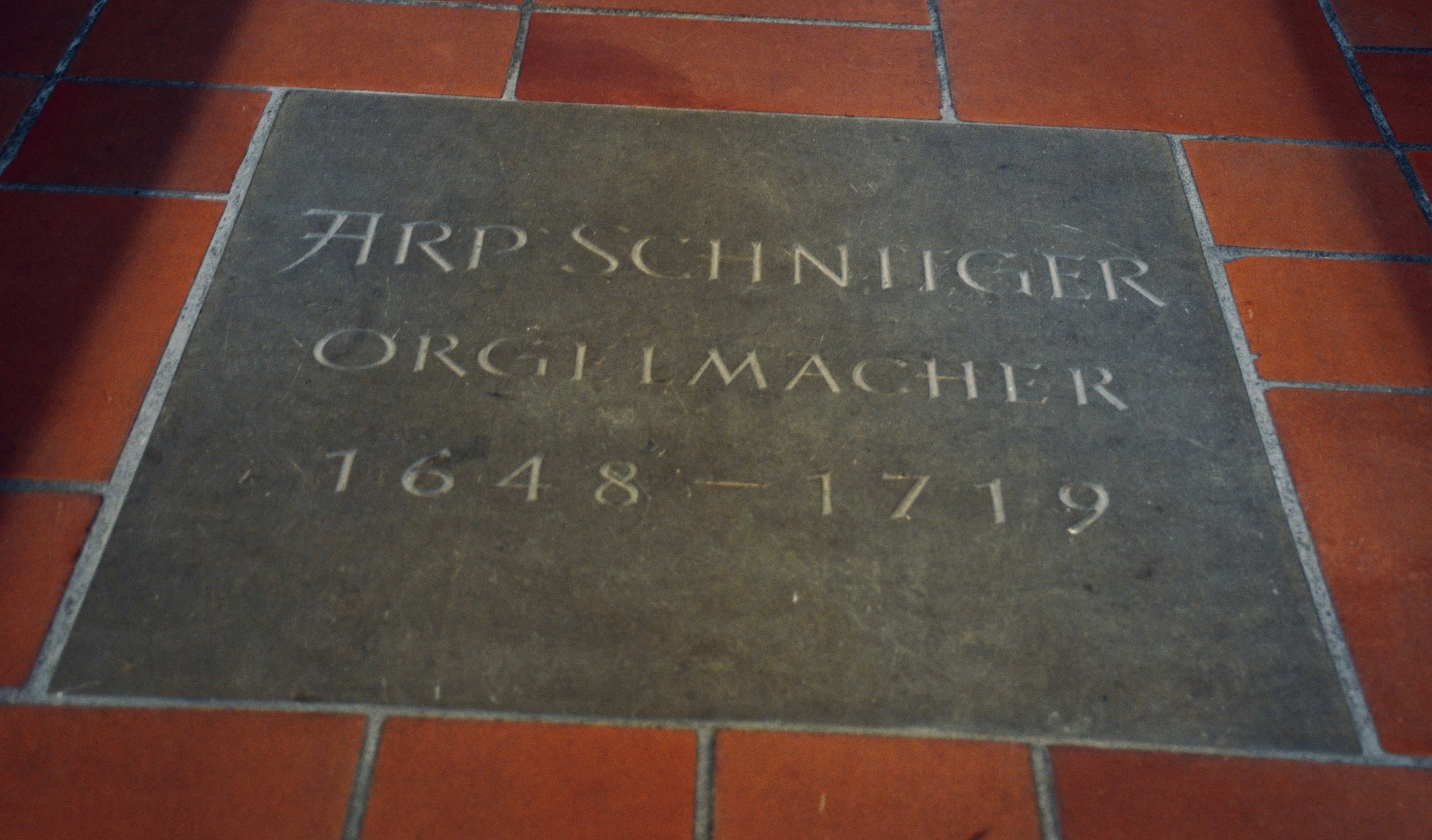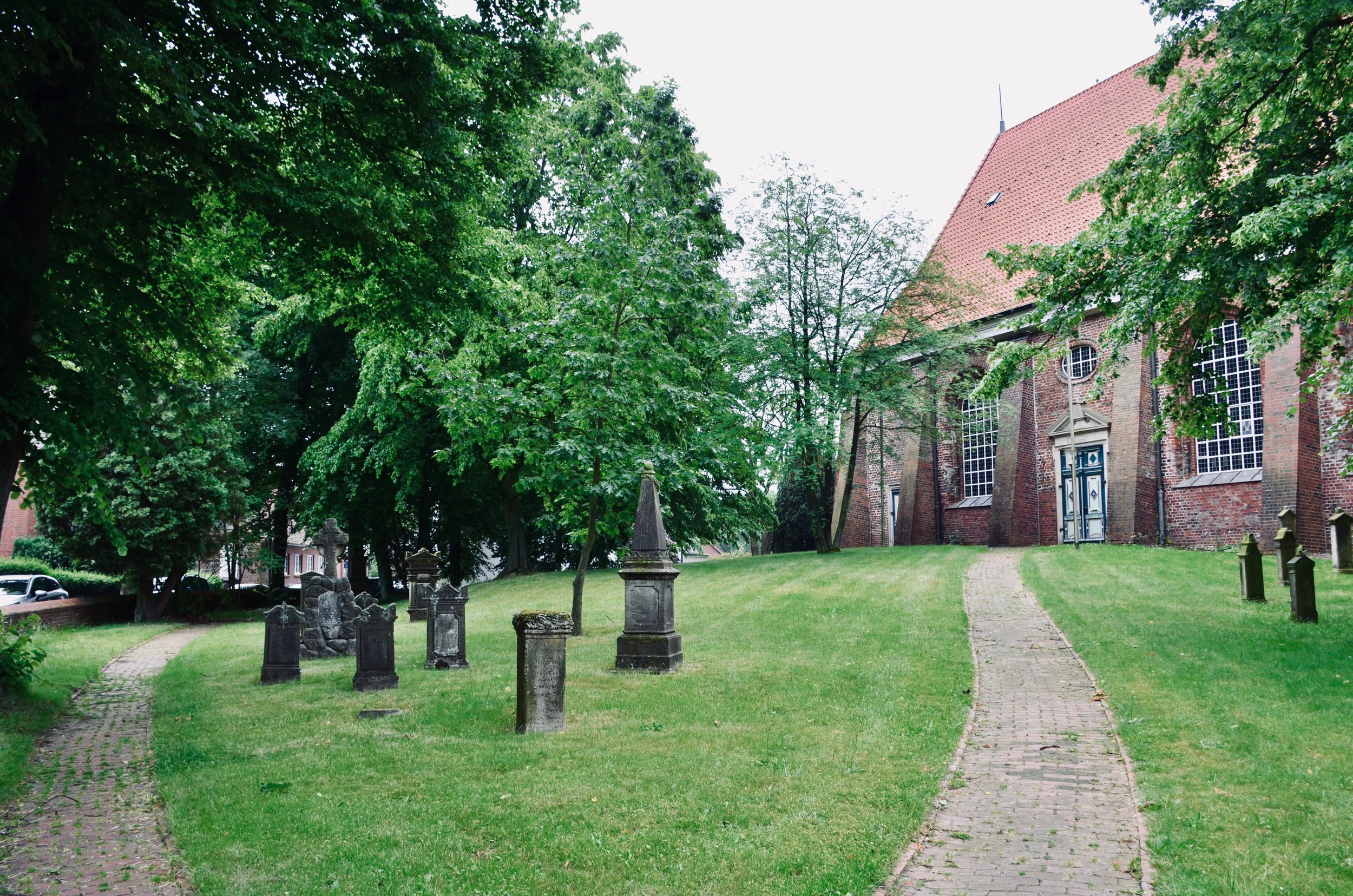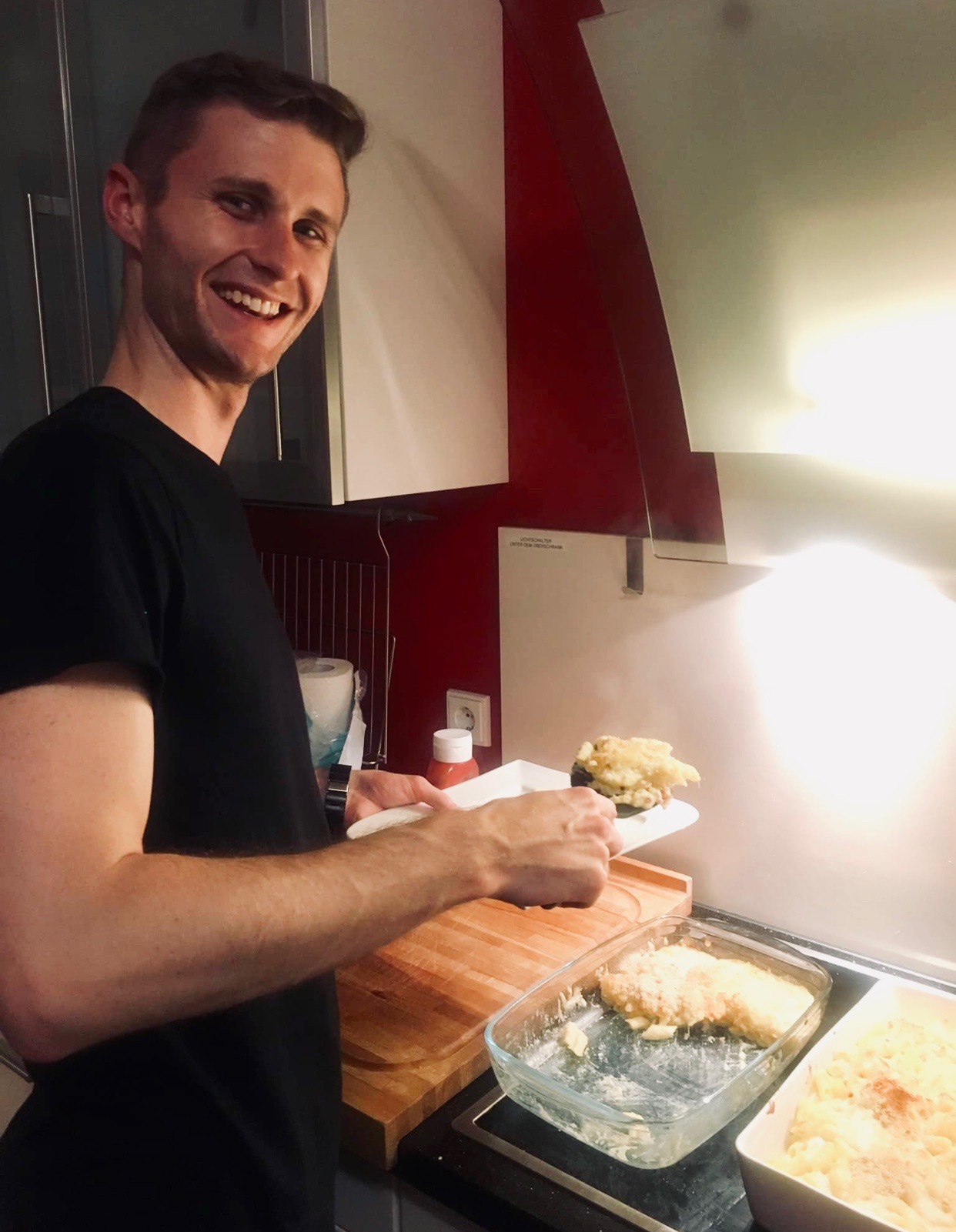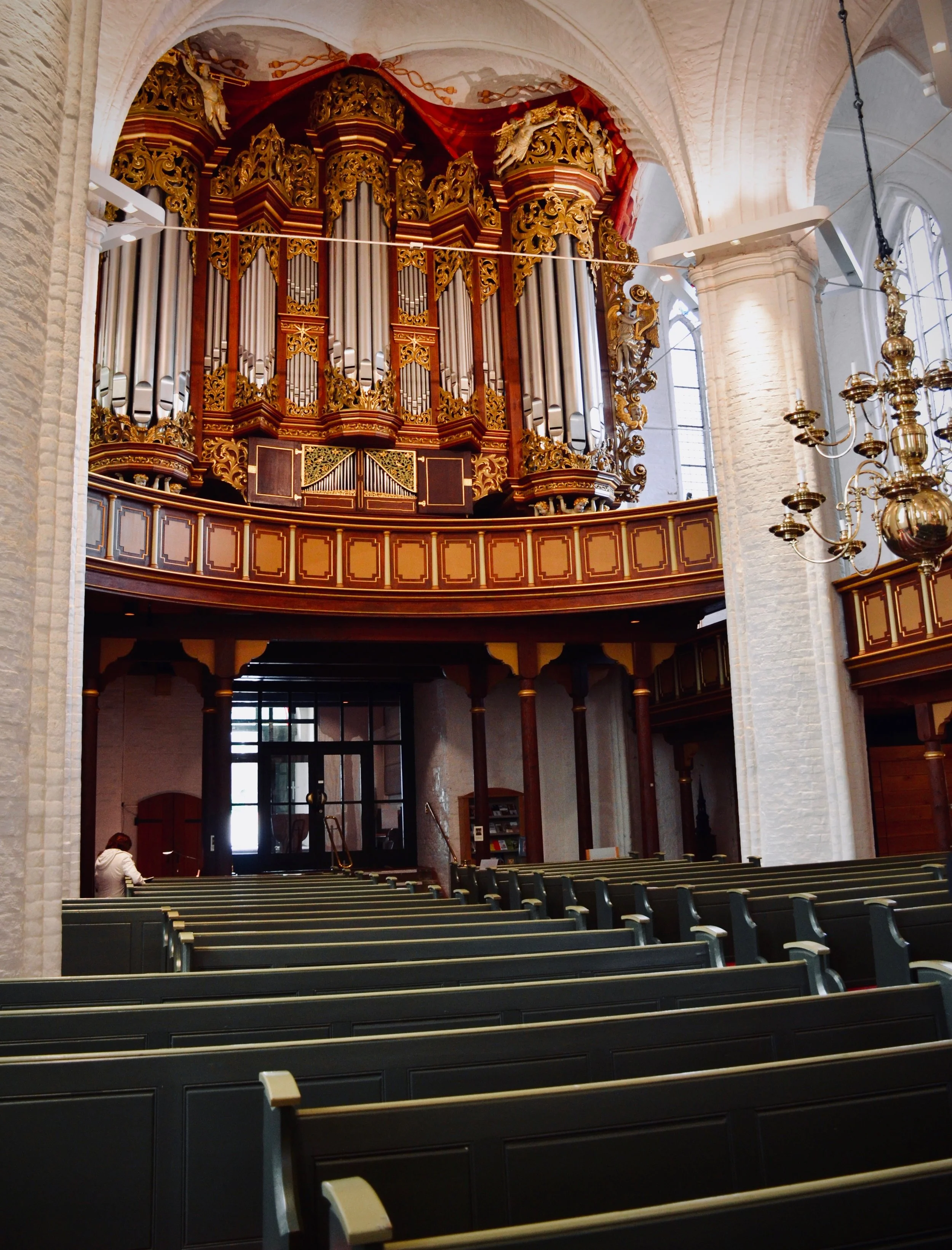Full of Schnit…ger!!!
by Alex Ross
Adrian Cho greets the group in Stade.
We had an early start today . . . cereal and toast reminded us of how much we missed Meg’s French Toast from yesterday. Today, our first stop was in Stade: more specifically, St. Cosmæ & St. Daminiani (Hüss/Schnitger, 1669–73) — the church of noted composer Vincent Lübeck. Our host in Stade was Martin Böcker, one of the professors at the Hochschule für Kunste in Hamburg and organist at St. Cosmæ. We also welcomed our friend, Adrian Cho, who flew into Hamburg late last night.
Prof. Böcker gave us a brief historical background of the organ in Stade as well as specifics at St. Cosmæ, which was notably cooler inside (thermally and fashionably) than the grizzly grey outdoor weather we were having. If you don’t yet know about this organ, you should. It is, in effect, the first organ of Arp Schnitger. He was still apprenticing with his cousin, Berendt Hüss, but assumed responsibility for the construction of this organ while Hüss was focused on another project elsewhere. Hüss died shortly thereafter and Schnitger formed his own company filling in the void left by his cousin. I think it’s safe to assume that many tools and employees from Hüss went to Schnitger.
Schnitger organ, Stade.
Prof. Böcker demonstrates the instrument in St. Cosmæ.
Prof. Böcker gave an excellent demonstration of the organ as we crammed ourselves around the console. Particularly interesting were the façade pipes of the Rückpositiv that survived the tin scourges of both world wars as the positif was hidden behind the main case at that time. Another point of interest was the Cimbel mixture that repeats twice per octave, giving a bell-like effect. Interestingly, this organ actually contains a set of bells (which were overlooked in the tour. I turned them on later, unknowingly, by means of an unmarked drawknob, not knowing that they had been having problems, and several bells would play thereafter even though the stop was off).
1736 Bielfeldt organ, Stade.
A couple of us played, and then we ran off to St. Wilhaldi to see the Erasmus Bielfeldt organ of 1736. Prof. Böcker explained to us how Bielfeldt was much like Froberger and Muffat in that he travelled a lot and created an interesting blend of many different styles. Tierce mixtures like one finds in the South of Germany, super wide-scaled façade principals like one finds in Spain, and reeds like one finds in North Germany. This tonal mix coupled with a Werckmeister temperament makes this organ fantastic for everything from Buxtehude to Frohberger and Muffat, Bach, Walther, Vivaldi. Almost anything Baroque! Our time was running short, so we didn’t actually take turns playing here but listened and watched another masterful improv/tour by Herr Professor.
Lunch in Stade, Germany.
Amidst a lunch of Schnit…zel, three of us alternated 30-minute practice times as we had a masterclass that afternoon back at St. Cosmæ! Jennifer started the masterclass with Buxtehude’s D major præludium. This was an interesting opportunity for us to learn about the influence of opera on organ music in Northern Germany. I followed with (most of) Nun freut euch…of Buxtehude. Holy smokes, that action is no joke. I loved the experience so much because of the beautiful sounds, smells, and sights of the organ and church (yes, smells), but the Hauptwerk spring chest is a beast. Perhaps wrist weights are the answer!
Alex Ross performs Buxtehude in masterclass with Prof. Martin Böcker.
In any case, Prof. Böcker is an absolutely inspiring teacher. He and the organ have me seriously wishing I could do an exchange for a whole year!
1688 Schnitger organ in Neuenfelde, Germany.
From there, we headed to Neuenfelde to visit Schnitger’s home parish at St. Pankratius. After finding Schnitger’s grave in the church; the church organist, Hilger Kespohl, gave another fantastic demonstration — the Toccata in F of Buxtehude. The organ was recently restored in 2015–16 by Wegscheider of Dresden. The instrument was in fantastic shape —a lot of fun and full of fire! The façade is interesting as it is literally covered in tin foil since the pipes themselves are made of lead (word of the day: das blei). From downstairs, it is quite convincing.
Evan dishes up dinner!
After such a long day and a long drive home, Nick Capozzoli, Rosemarie and I shared a McGill Organ Department special with the others: our patented Mac & cheese cheese cheese cheese cheese — So named because there are five types of cheese. Also, a lovely salad with a homemade vinaigrette and the smell of Meg’s fruit pies is currently making our mouths water!
